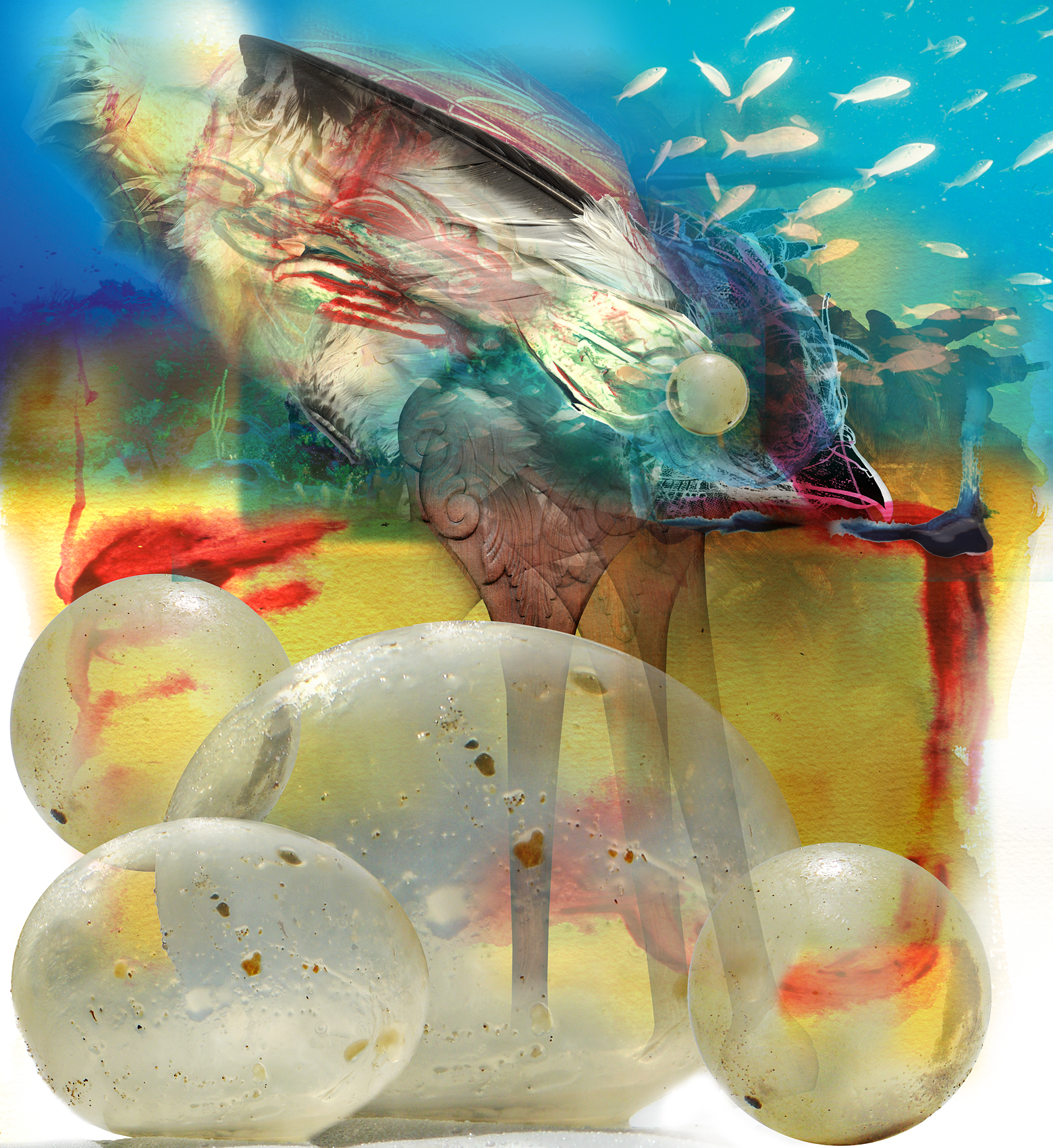
Bird spawning sea eggs
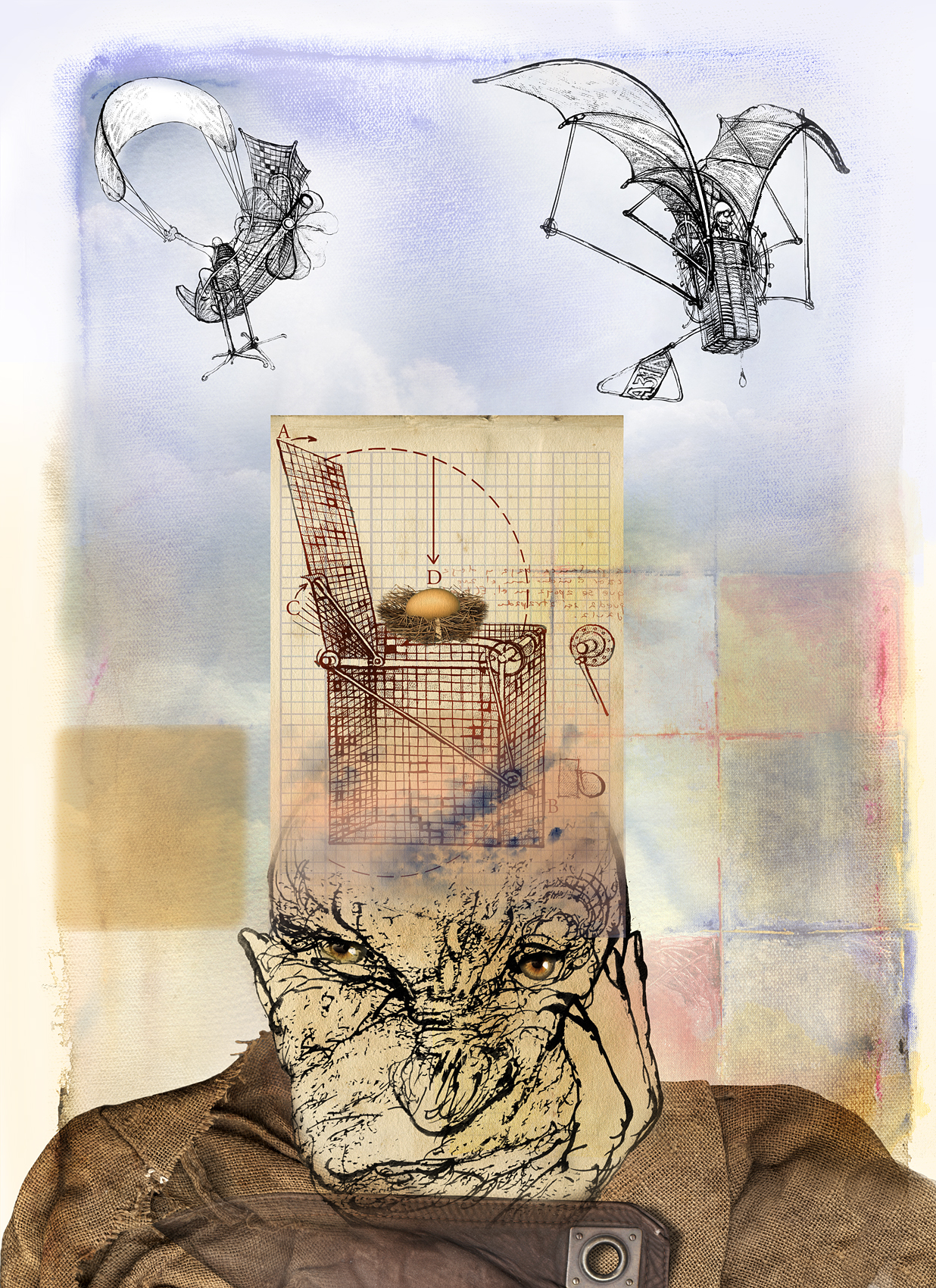
Catching flying machines (Creative Destruction)
Throughout history, the destructive process has been considered as something abominable, and being condemned. German sociologist Werner Sombart took a positive approach on the subject and his ideas became popular as a result of Austrian economist Joseph Schumpeter’s book “Capitalism, Socialism and Democracy”, printed in 1942. Sombart and Schumpeter see in destruction a process of innovation indispensable for Market Economy, since it opens possibilities of generating new products. Anarchist and philosopher Mikhail Bakunin did not delay in embracing the theory, and sustained that in general, the destructive force is the force that creates “the New” (The passion for destruction is a creative passion).
Of course, for this to be possible, new creators should bring to life new goods knowing that they only exist to be destroyed in the future.
This statement launched cheerfully as such into the flow of current ideas, stirred up the members of the Inventors Association of Vienna, who published a manifesto in which they expounded the paradox of this issue and questioned the validity of the supposed improvements that would replace their exhaustively proven inventions, and they portrayed Bakunin as a tramp in a manifest printed as a large poster condemned to oblivion, which we reproduce here. Fortunately, saved by the collective memory.
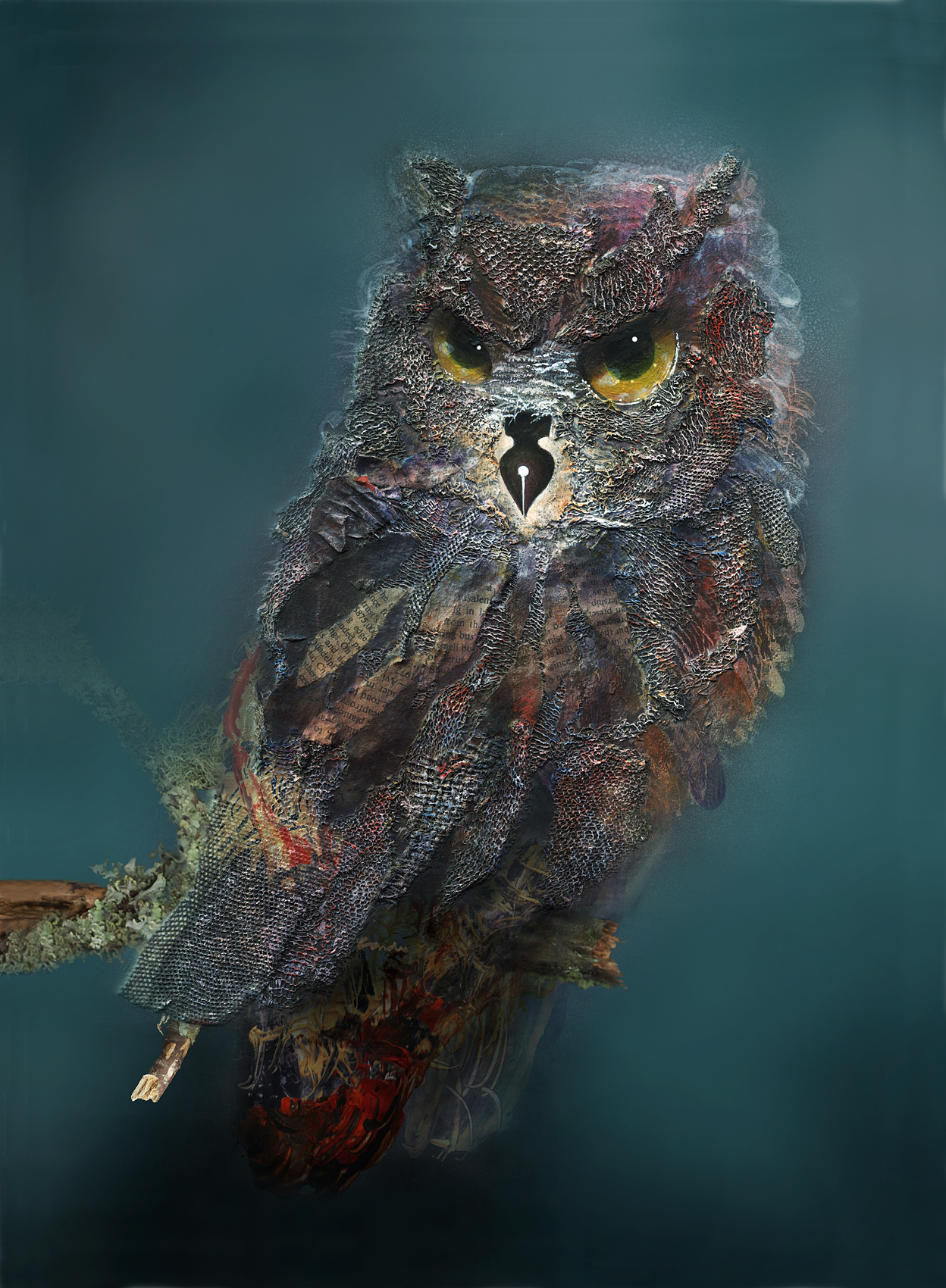
Cultural sentinel

Daydream warrior
The Partido de Navarro received its name from Captain Miguel Navarro, whom Juan de Garay grants in charge to the cacique Pibisque (or Chivilque) with the rest of his malón. Although perhaps the most relevant event in its history is the battle of Navarro, in which the forces of the Unitarian General Lavalle defeat those of the federal Colonel Manuel Dorrego, Governor of the Province. "... Five bullets were embedded in the chest of Dorrego", says the Zamba de Navarro alluding to his execution, on December 13, 1828, in the vicinity of the El Talar ranch.
It would be more than a century after, in 2010, that the joint effort of the Cultural Institute of the Province of Buenos Aires and the Municipality of Navarro, made possible the creation of the First Painting Biennial Lucio Correa Morales, award given to this painting which reflects at the same time that bloody past and the custody of peace by art.
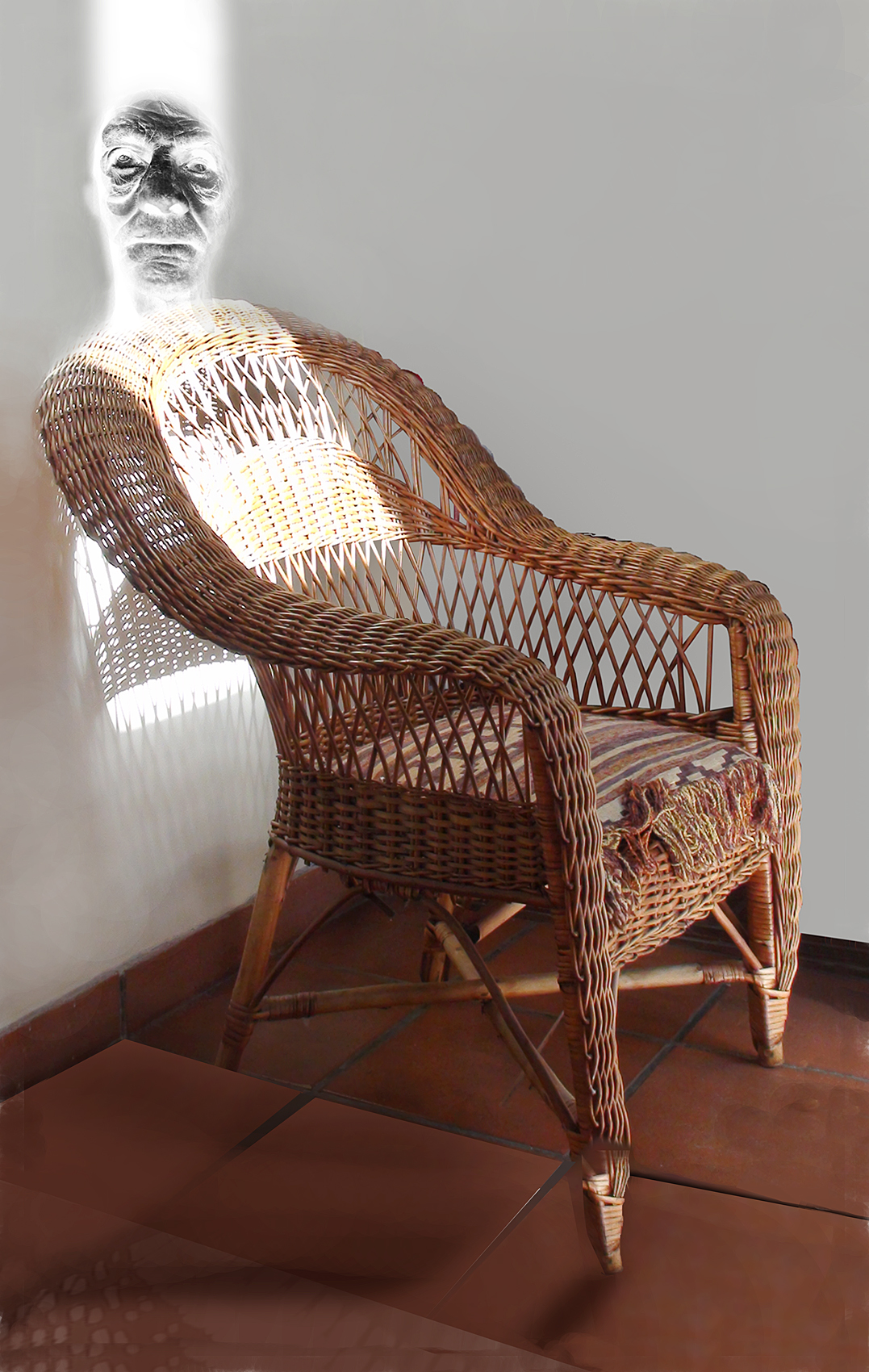
Dimensional intersection.
According to the theory of the unfolding of the phases of time, of the French physicist Jean Pierre Malet, everything in the universe, from the planets to the grains of rice, have a double quantum, a double existence, existing in a wave state —the natural state of our energy body—, while we move in the physical one. In instants of millionths of a second and under the REM phase or paradoxical dream, when our activity is more intense, these two realities make contact. Then, the impression is so intense that it can be captured by our "nuptial" camera (marriage with ourselves).
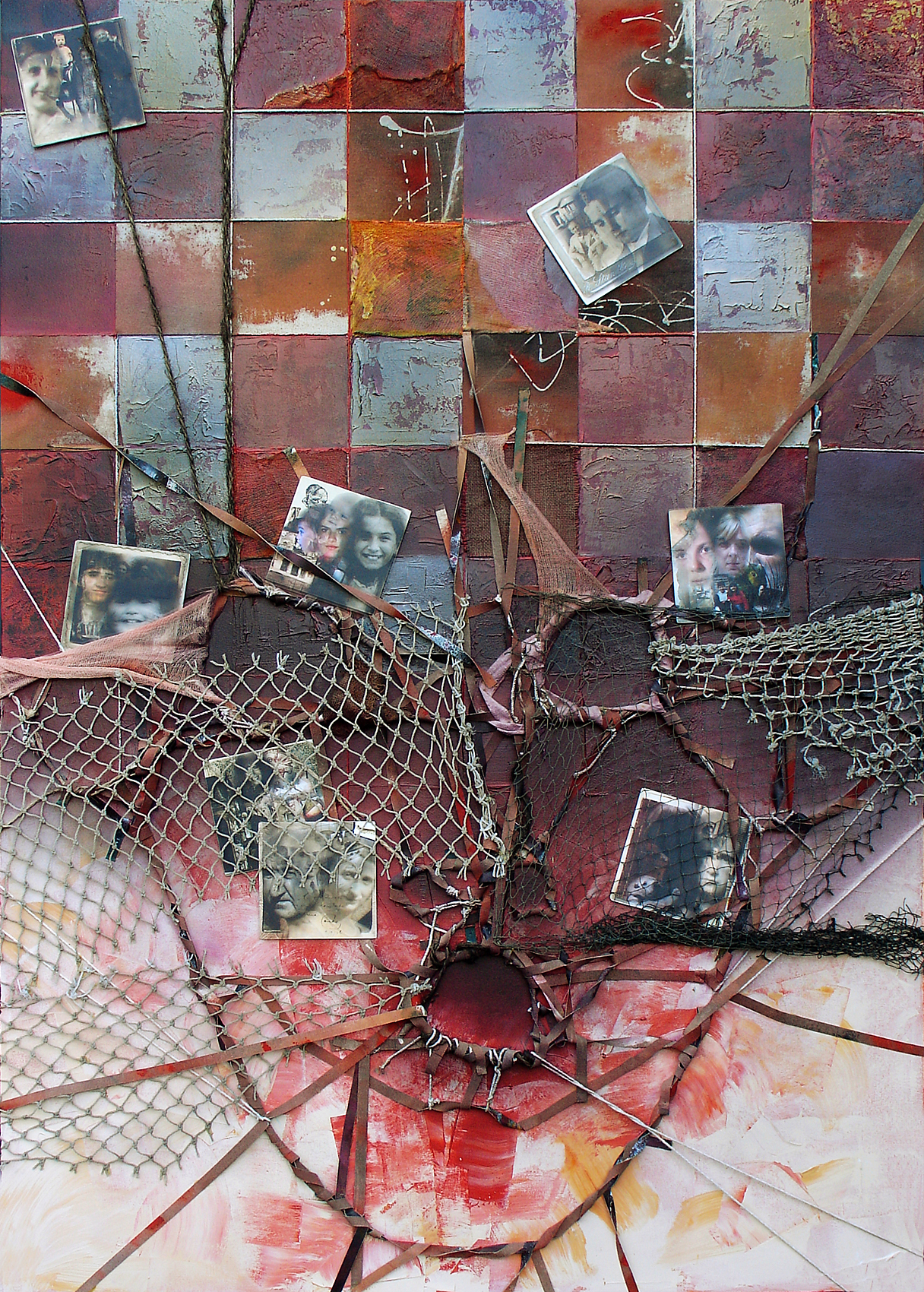
Game over
Our birth begins a kind of game in which the most authentic sensations begin to be deposited, those more significant, that will accompany us on our journey towards death. At that precise moment, the humans began a detachment, to give way to a rolled up on ourselves (according to The Upanishads), and another game will begin to take place.
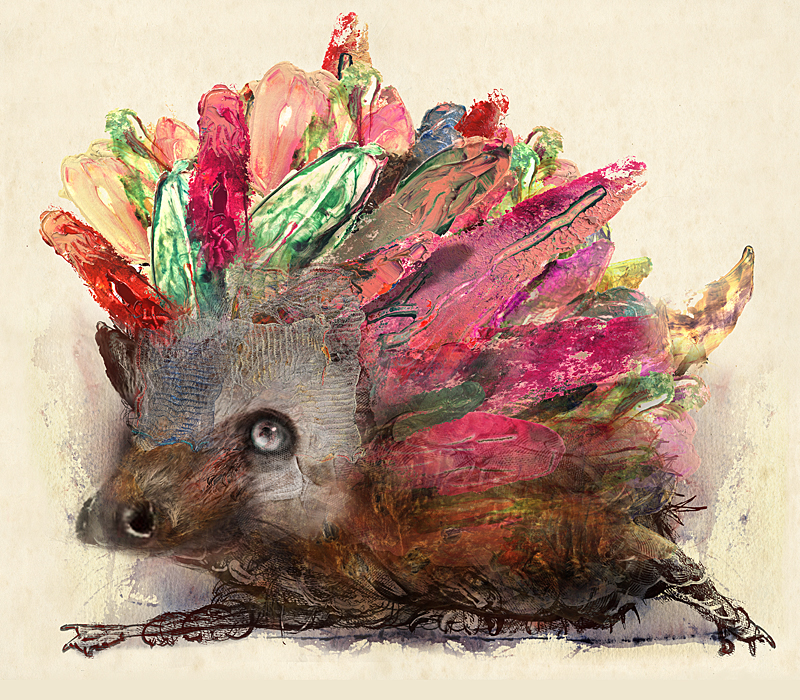
Hedgehog of peace
Inexplicably and due to a blind repetition since Biblical times, the symbol of peace was instituted and represented by the dove turned to the Ark of the Covenant once the wrath of the Lord was quenched. The pigeon, however, is far from being a peaceful animal (it is enough to see how a couple blinds a third dove, whom they want to expel from their domain).
A variety of hedgehogs (potentially extremely aggressive animals) has developed the voluntary ability to transform their thorns into tender petals, and deserves to occupy the seat destined for pigeons.
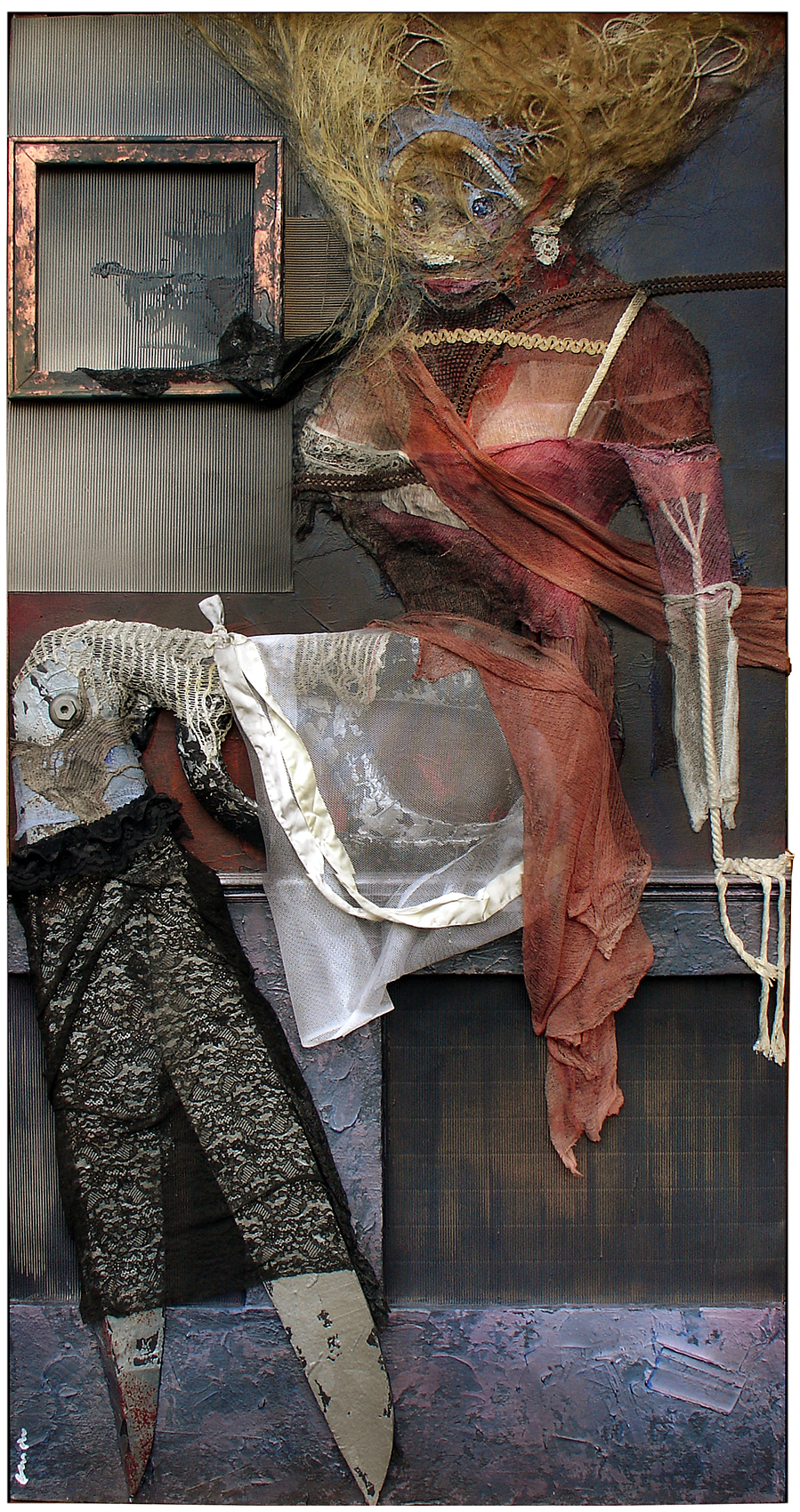
Hera
(ἭραHēra) is the legitimate wife of Zeus in the Olympic pantheon of classical Greek mythology. Her attributes shown here (her hair grasping the frame waiting for her new victim, the castriate scissors), made her the perfect model to be accepted as the Goddess of marriage.
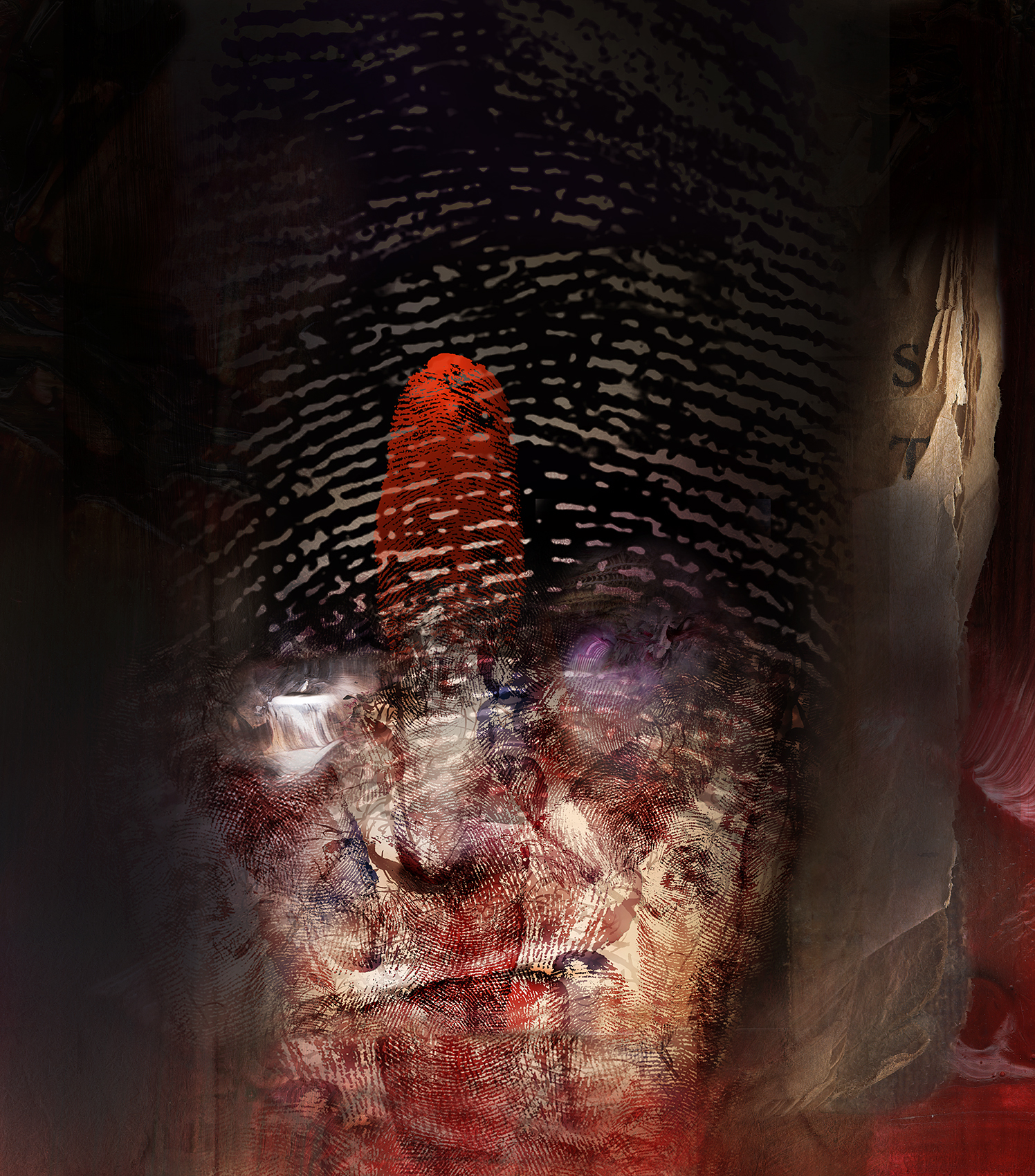
Identities
Despite being aware that our identity is not unique, we tend to identify ourselves more with some of these beings than with others that we have carried even for much longer. Despicable legion of selfs that we expose without any remorse like our own in our small daily personal theater. Our ouwn way of exercising censorship.
Searching in that labyrinth to bring everyone together in a majestic Grand Finale is our ultimate task.
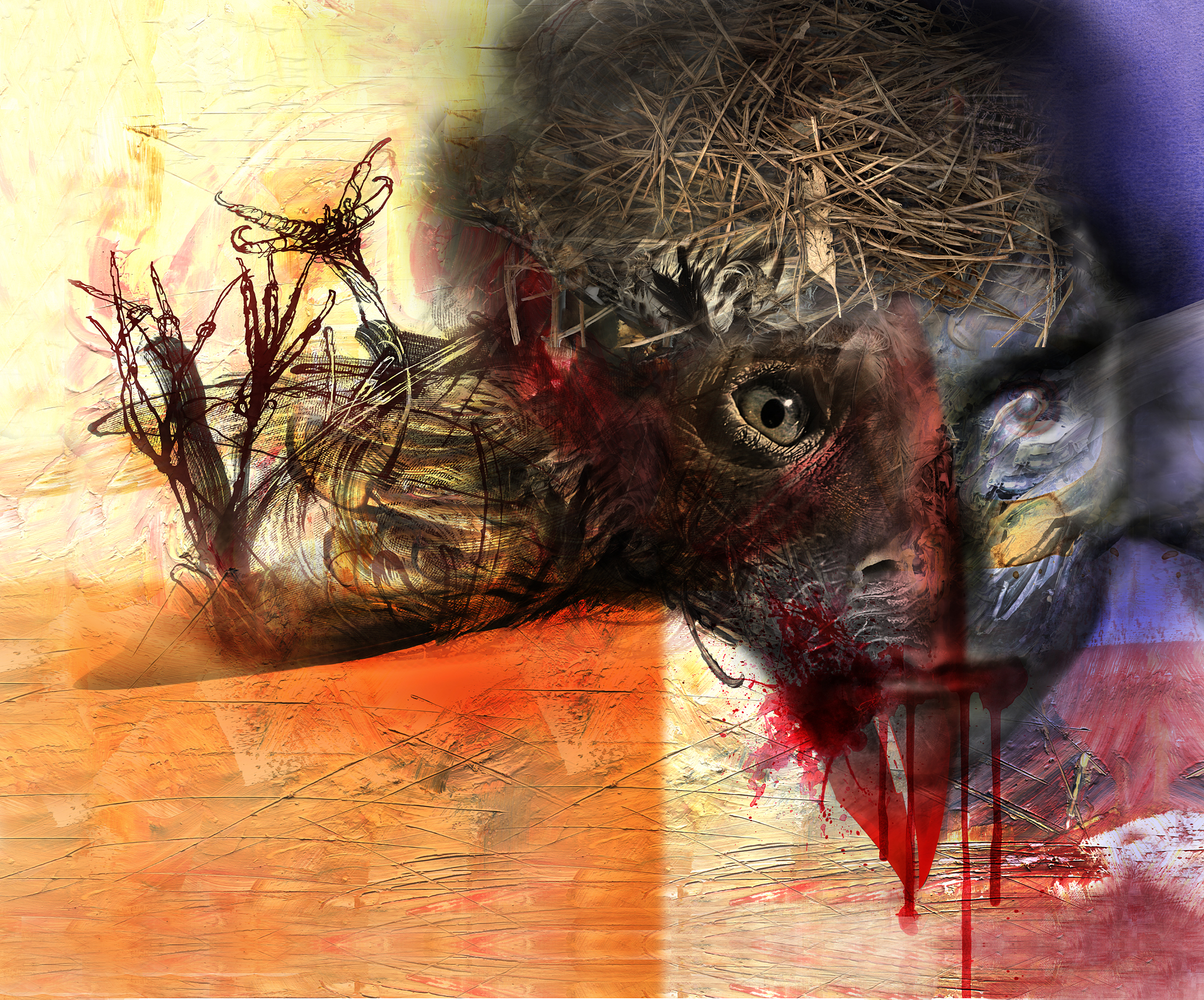
Kafka and his vulture

Leak in the mythological matrix
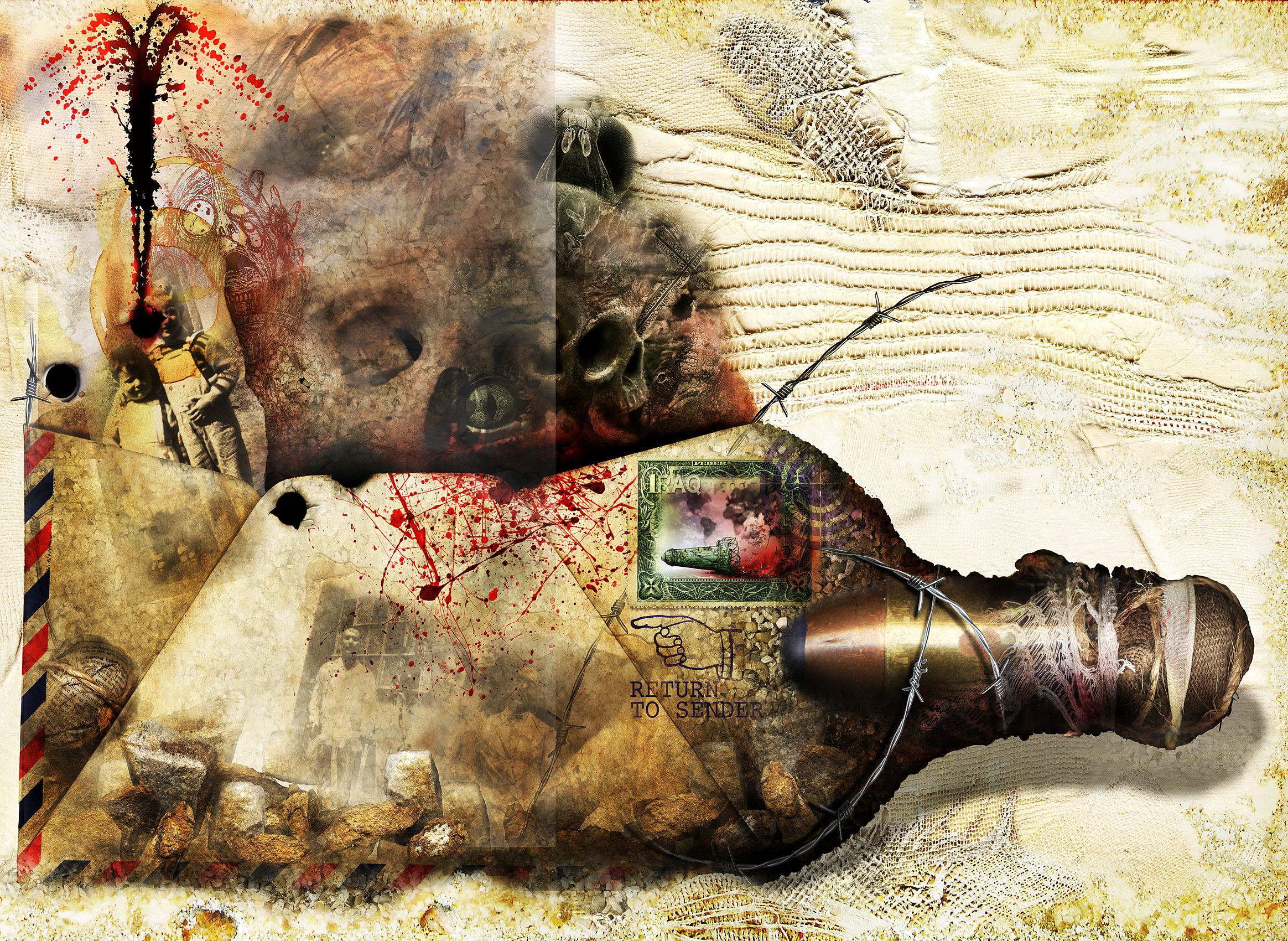
Letter from Iraq
Thrown into the sea of sand denouncing the destruction of temples, churches, mosques, statues, art pieces and bas-reliefs of incalculable and irreplaceable historical value lost forever due to human and greed.
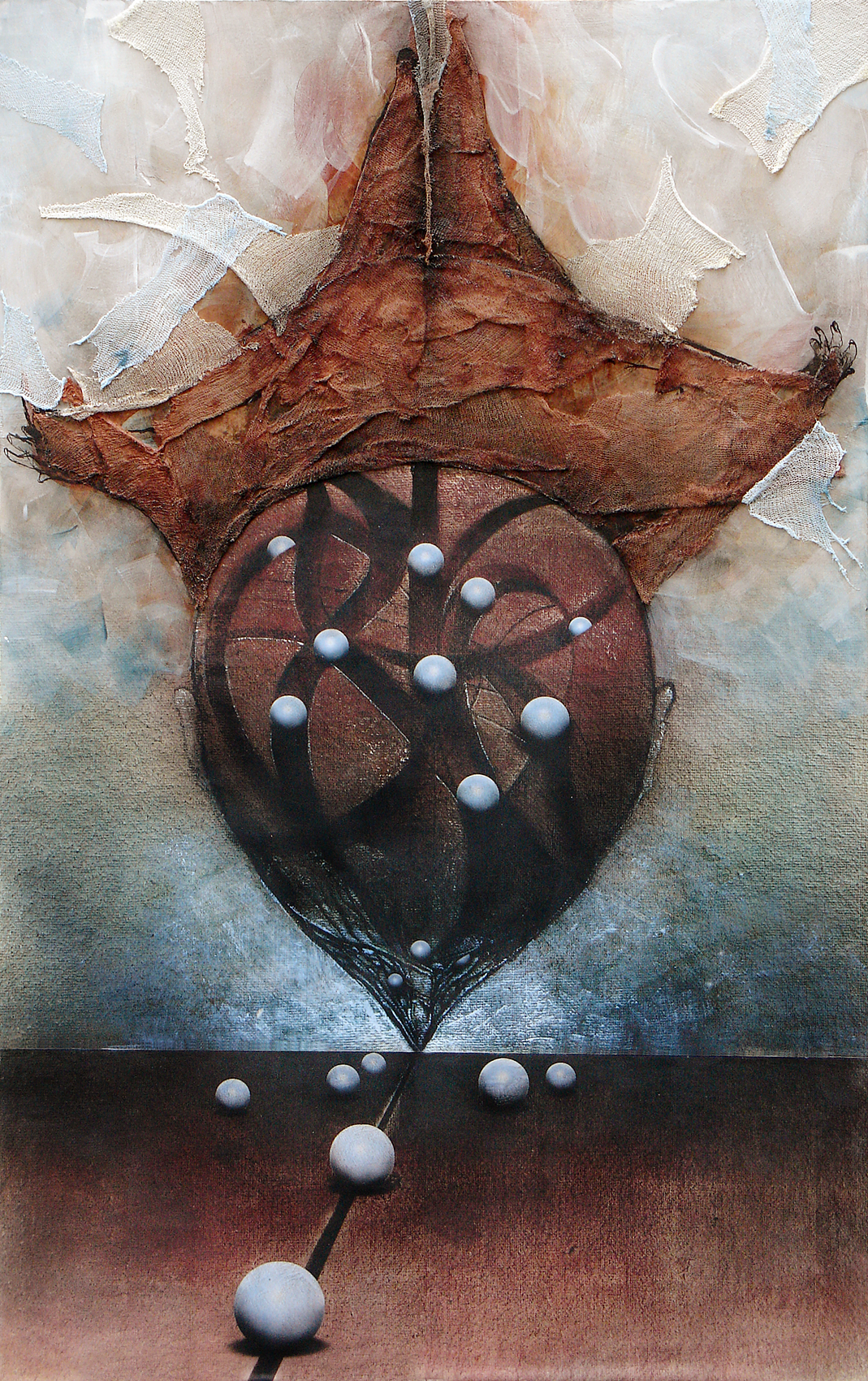
Libator of Worlds
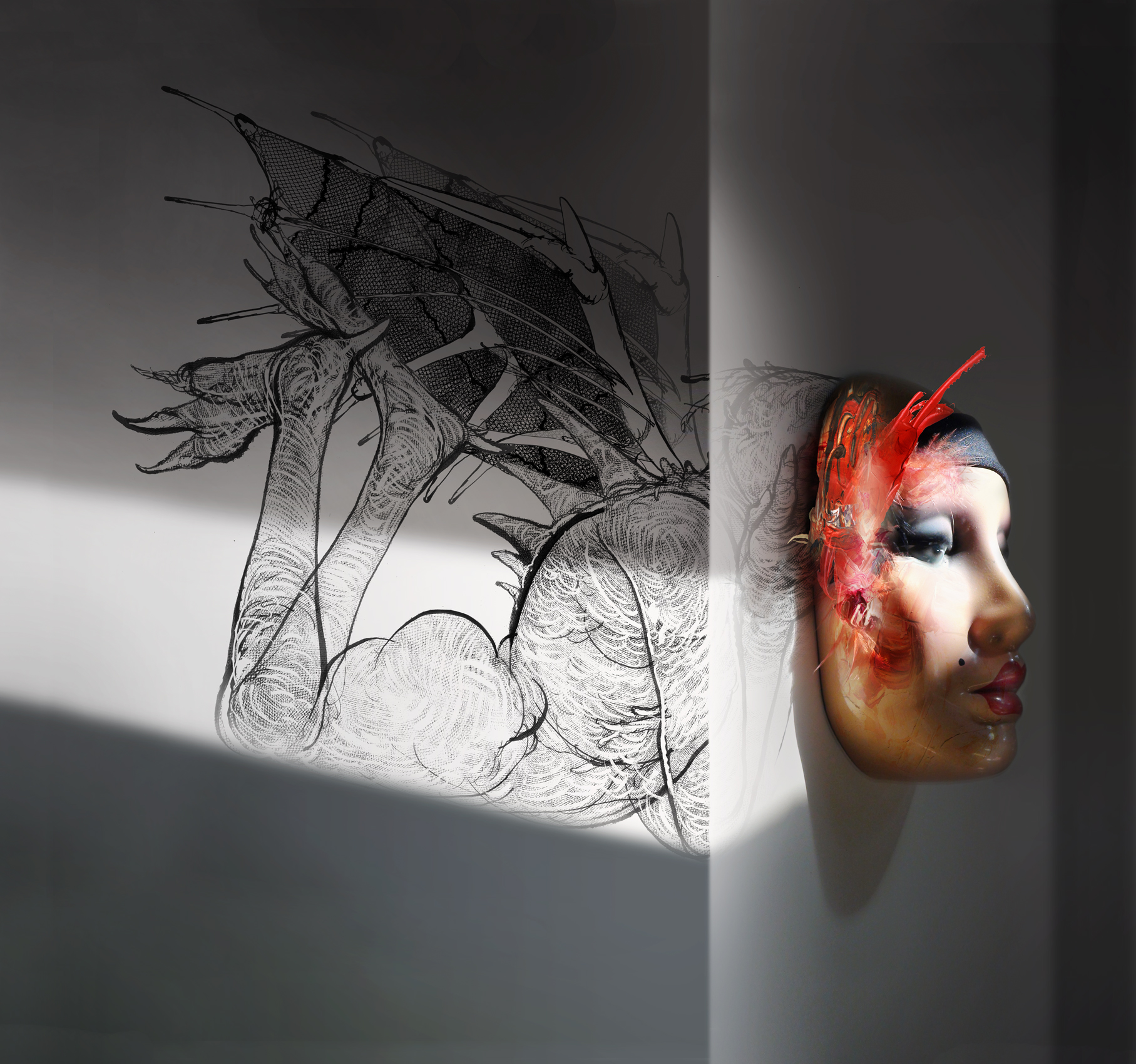
Light demon
The mask is a door of communication between the interior universe and the exterior of the individual.
The word "mask" has its origin in the French masque, Italian maschera, Spanish masquera or the Arab maskhara: "jester" or "man with a mask". But the most revealing of all these meanings comes from the Latin (not classic) the mascus, chew, "ghost".
Being an element of protection, it is logical that they constitute also the most vulnerable part of the human being, since darkness possesses a natural voracity for light (everything learned in them lacks truthfulness, since "experience comes from of the senses, for light is required for every manifestation " (St. Augustine).
In our time, and from the statements of Max Planck, in 1899, quantum optics and especially Photonics study the behavior of photons, particles Fundamentals of electromagnetic interactions and their behavior in the use of information transmission. What is disturbing is that being a bridge between two universes, this exchange, whether conscious or unconscious, is reciprocal.
One wonders who or who peek behind our mask, and for what purposes.
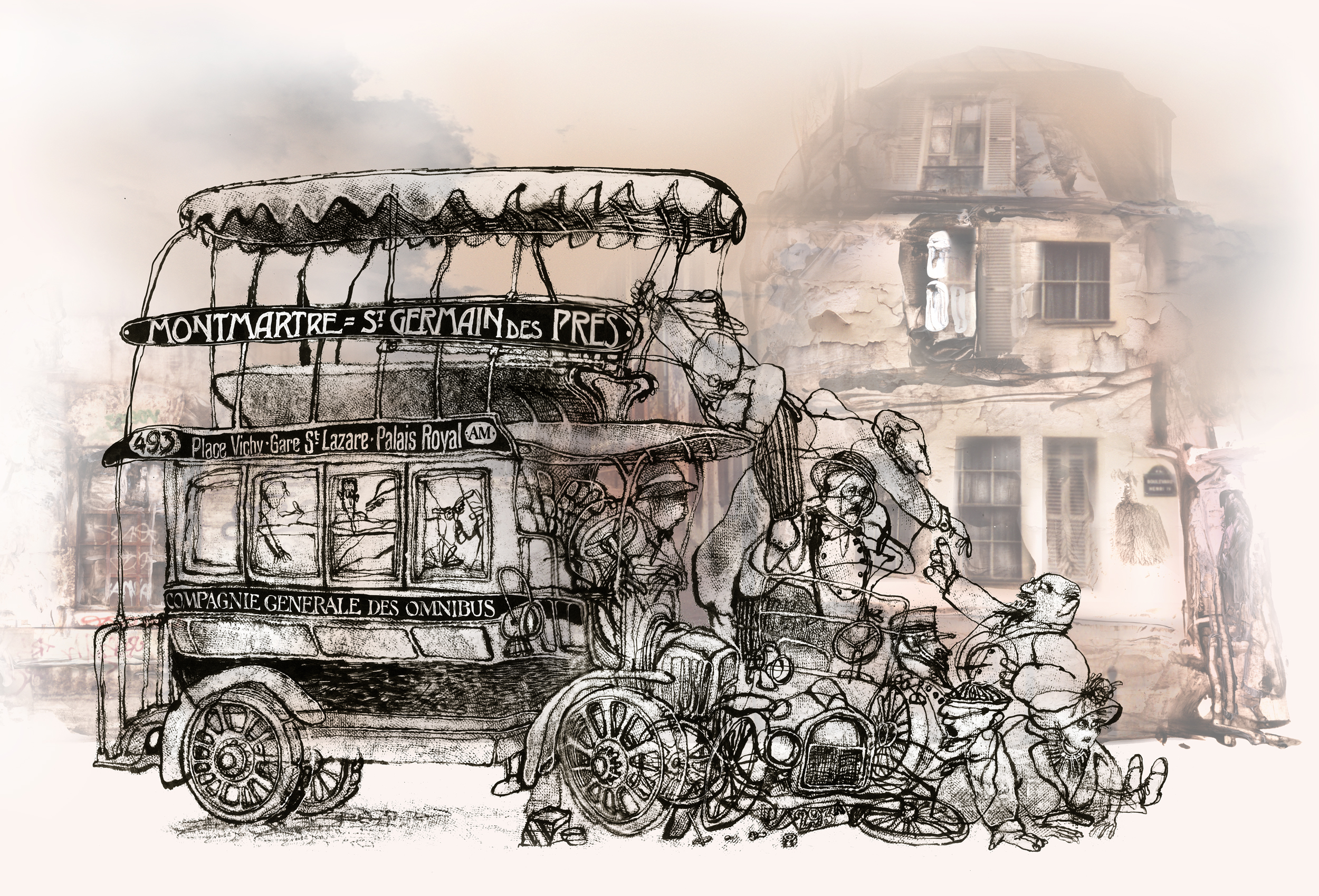
Meeting at the Latin Quarter, Montmartre

Minotaur coming out of his labyrinth
Men worthy of faith (but Allah knows more) count than in the first days there was a king of the islands of Babylon who gathered his architects and magicians and ordered them to build a labyrinth so perplexed and subtle that the most prudent men do not ventured to enter, and those who did were lost. Those works were a scandal, because confusion and wonder are operations proper to God and not to men. With the passage of time a king of the Arabs came to his court, and the king of Babylon (to make fun of the simplicity of his guest) made him penetrate the labyrinth, where he wandered affronted and confused until the decline of the afternoon. Then he implored divine help and found the door. His lips made no complaint, but he told the king of Babylon that he in Arabia had another labyrinth and that, if God was served, he would make it known some day. Then he returned to Arabia, gathered his captains and his wardens and ravaged the kingdoms of Babylon with such a fortune that he demolished their castles, broke their people and captured the king himself. He tied him up on a fast camel and took him to the desert. They rode for three days, and said: “Oh, king of time and substance and number of the century! In Babylon you wanted to lose me in a bronze labyrinth with many stairs, doors and walls; now the Almighty has seen fit to show you mine, where there are no stairs to climb, no doors to force, no tiring galleries to cross, no walls to see the way. “Then he untied the ligatures and left him in the middle of the desert, where he died of hunger and thirst. The glory be with the one who does not die.
Jorge Luis Borges. The two kings and the two labyrinths.

Minotaur entering his labyrinth
It is stated that the birth of the mask occurs historically when man becomes aware of himself. “The face”, says Alexis Zorba, by Nikos Kazantzakis, quoting the Japanese, “immobile mask; what happens behind the mask is our own business”.
One has begun to take the first steps through that greater universe than the one revealed to our eyes. An intimate universe of which we are the only non-transferable traveler, which we have board without a known ending.
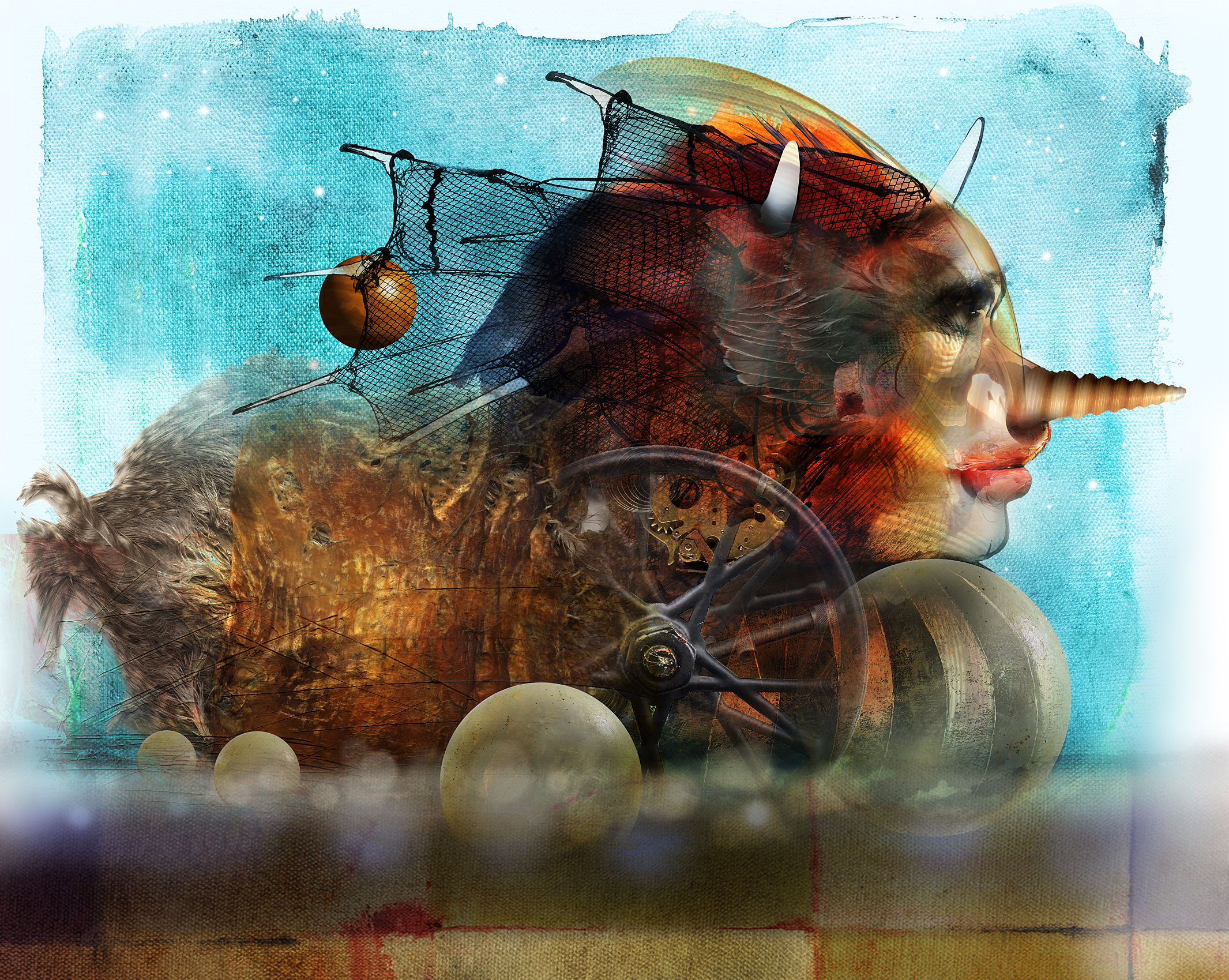
Oceanic Vestal

Multiple Seats for Airlines Project
To make available space in aircraft seats more efficient, and above all, to take advantage of my contact with a member of an important airline company to whom I hoped to present my invention, I devoted my time to the project of a multiple, eccentric seat, configurable in a hundred different positions (including one fit for a crash), and that could be used simultaneously by four passengers. I drew life-size blue prints so that those who participated in the project could place themselves on it, and the closeness or distance between the individuals could be mathematically evidenced.
To travel comfortably by plane, be welcomed at airports and received on arrival by our loved ones, was a historic event which took place on the maiden voyage of February 5, 1919, between Berlin and Weimar, via Leipzig, and perhaps may have occurred in some subsequent journey of the legendary airline PANAGRA, when governments had not yet imposed arbitrary measures on behalf of our security.
Since then romanticism exponentially multiplied the number of passengers, while internal capacity of aircrafts remained relatively stable. To make matters worse, the number of airplanes has been declining due to terrorism and the curiously called “friendly fire” of zealous guardians of airspace, so it became essential to put valuable idle inner space to use. It was then that I conceived the idea of the multiple eccentric seats that would quadruple the available space within an aircraft, and which I baptized as “multiple cockpit seat”. It was not a name picked at random. The word cockpit first appeared in the English language in 1580: "a pit for fighting cocks" (or hole for fighting cocks), which perfectly conveyed the meaning of the apparatus.
I suggested the airline should fly an experimental aircraft exclusively fitted with these seats. This alternative was negotiated, and I had to accept that the first eccentric multiple seat would be installed in a cabin on steel rails.
The incompetence of one of the testers and (why not?) a boycott, locked the mechanism, making it impossible to rescue three of the crew members.
Today, the experimental seat is exhibited at the Curiosities Museum in Maastricht, together with the mummified bodies of three of the four crew members who participated in the experiment.
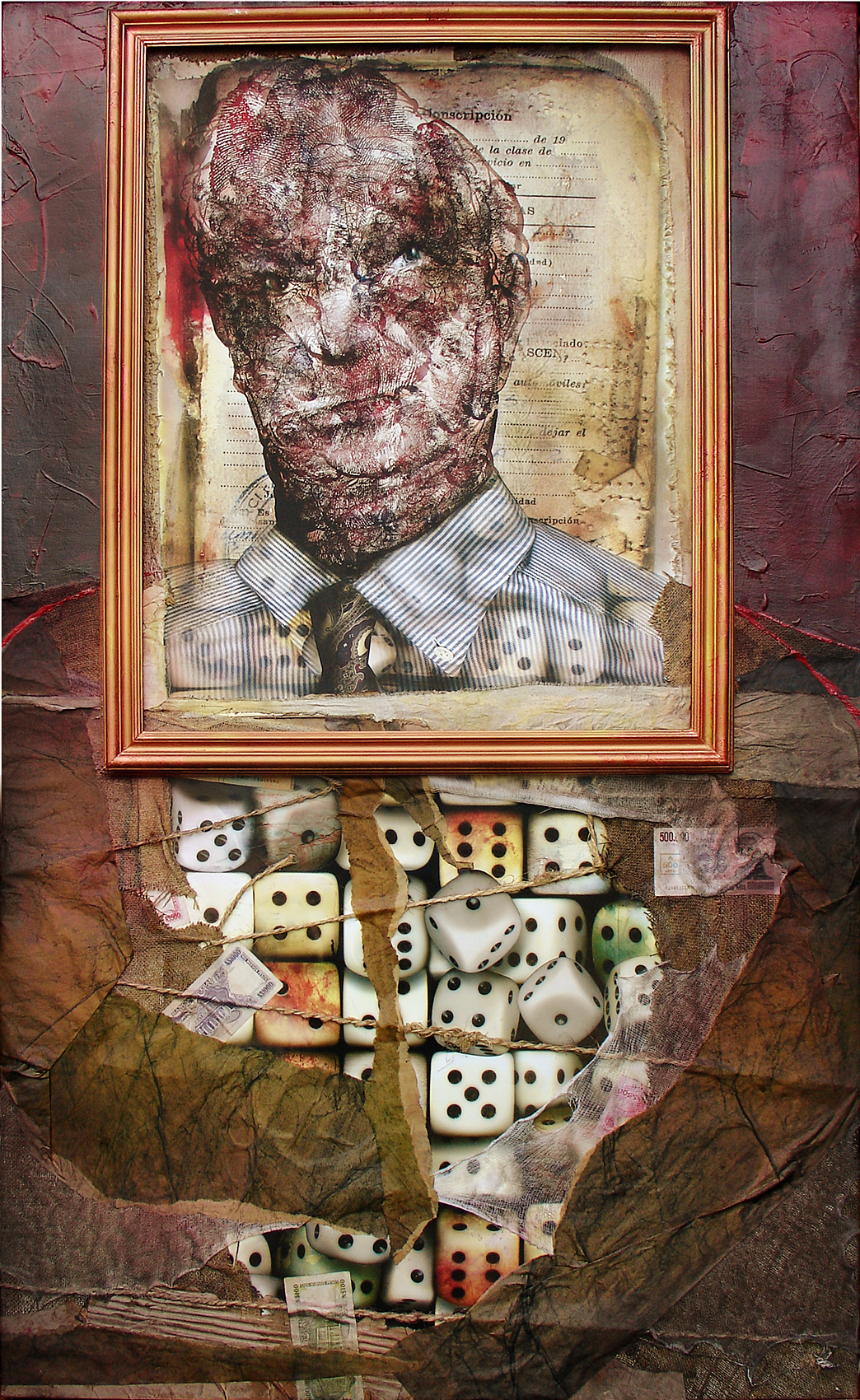
Self Made Man

Story of a face
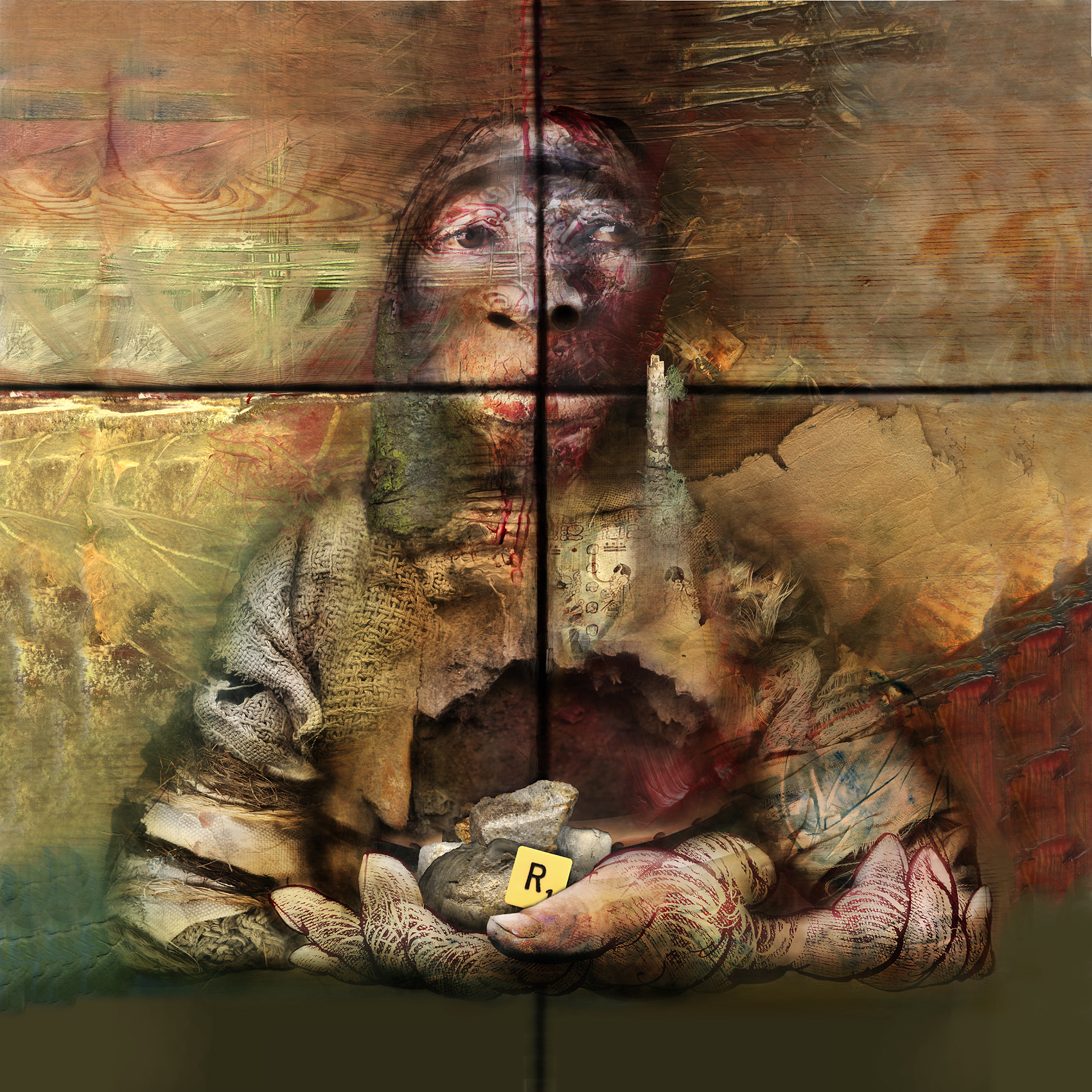
The Bermejo Codex
Indian, legs in parenthesis, flat profile and a quiet gaze, Bermejo Uribe showed all the features of his race, sensitive but inexpressive people, with hard manes like the grass of the Andean plateau.
He was a member of the Curupaití tribe. The press had taken note of them when only three remained; Bermejo, his grandfather and an old woman aged seventy six, who was unable to bear descendants.
He had dragged his ancestral determination to the city, took lodging in a boarding house, in a filthy room next to mine, and since then spent his time spreading his millennial silence in every corner of the house.
His movements were slow and infinite, as if those gestures had been drawn on the blackboard of time and he was limited to reluctantly retrace them.
He used to sit in the front hallway, at naptime. He lay there, on himself, with the sufficiency of inanimate objects, like a dying foreigner sheathed in his own story.
Most of the time, however, he lay confined in that room, the number nine, the one of the door eternally ajar, as the chain that replaced the classic latch, battered by use and time, condemned it to hang inwards, like the jaw of an idiot.
One night, around midnight, the voice of a reed flute called from that room. A while later, as if on tiptoes, another flute embraced the melody of the first one. Then there was a third, a fourth, a fifth one.
I approached in the dark and slowly half opened the door. The moon which had been spying along the corridor spilled across the room. Huddled in a corner, Bermejo looked at me motionless with his eyes chipped.
—Holes have opened in my body —he said—, holes through which my music escapes.
And he hugged himself trying to cover them.
By mid-night, the flutes amounted to thousands. The thousands of reed flutes of an Indian, who in a last embrace, united the entire race. Other indigenous instruments joined in that agonizing complaint, lacerating as torn leather, similar to an ancient and rough callus caress.
Then I heard the steps of the wind carrying the sounds away. So much so, that the morning brought them back, encrypted in a moist breath.
The body of an aborigine was found, which fell to pieces in lumps when lifted (from a newspaper of this city, 1934)
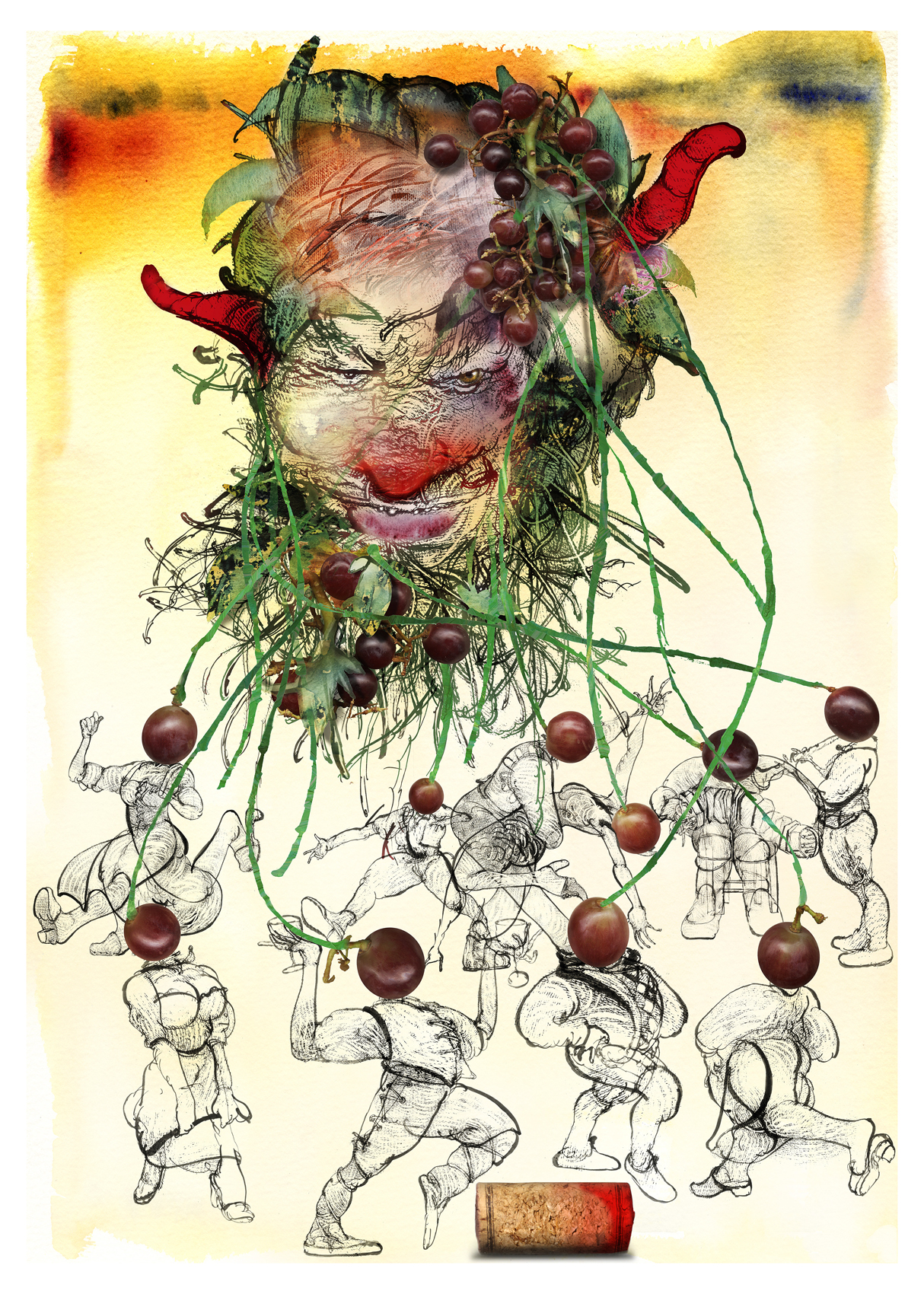
The dance of Bacchus.
First prize in the contest of Sardinia, Italy.
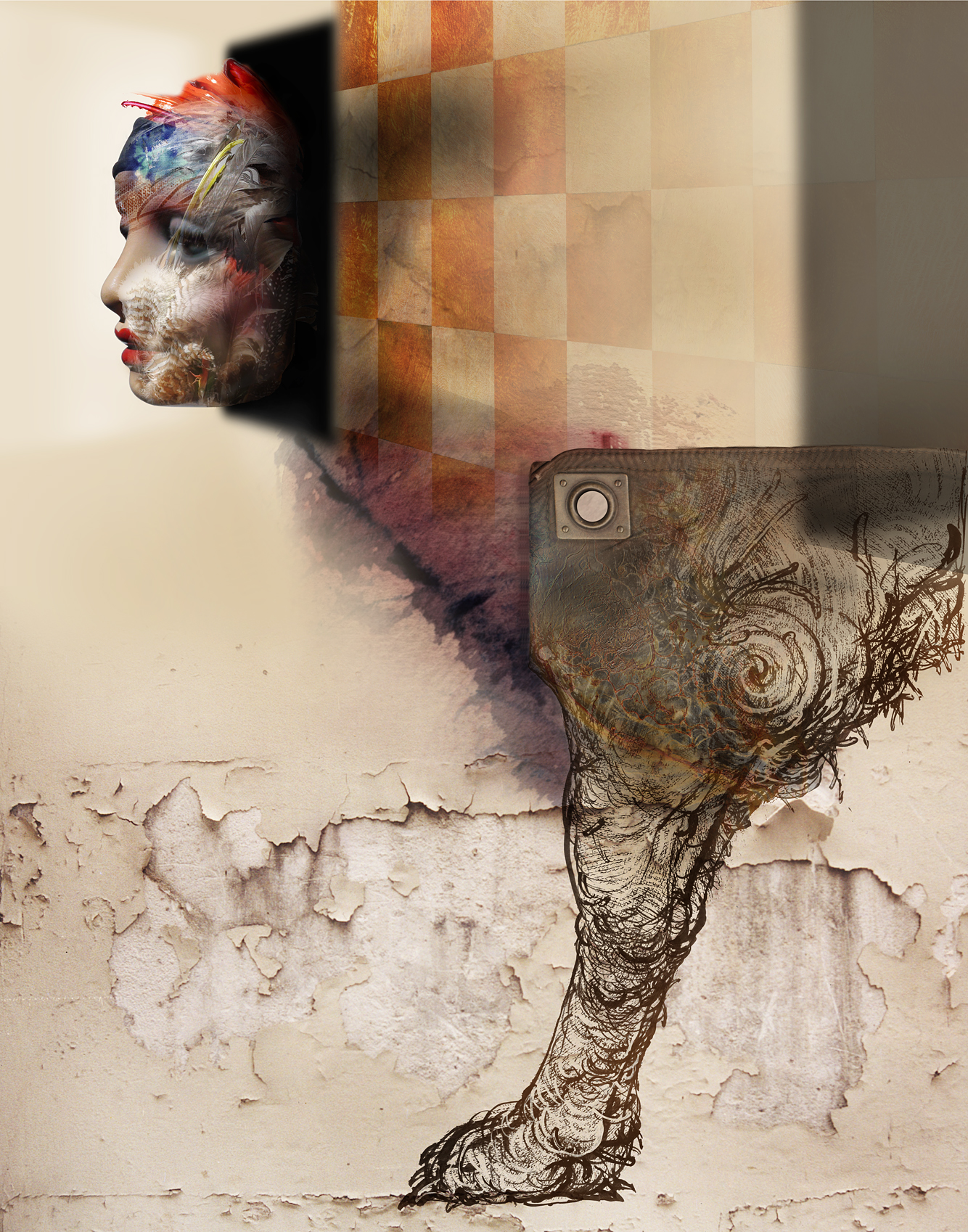
Goethe's eternal feminine.

The last charge of the invertebrates.
Painting that commemorates the last heroic and desperate — although unsuccessful— attempt of the insects to end with Montsanto.
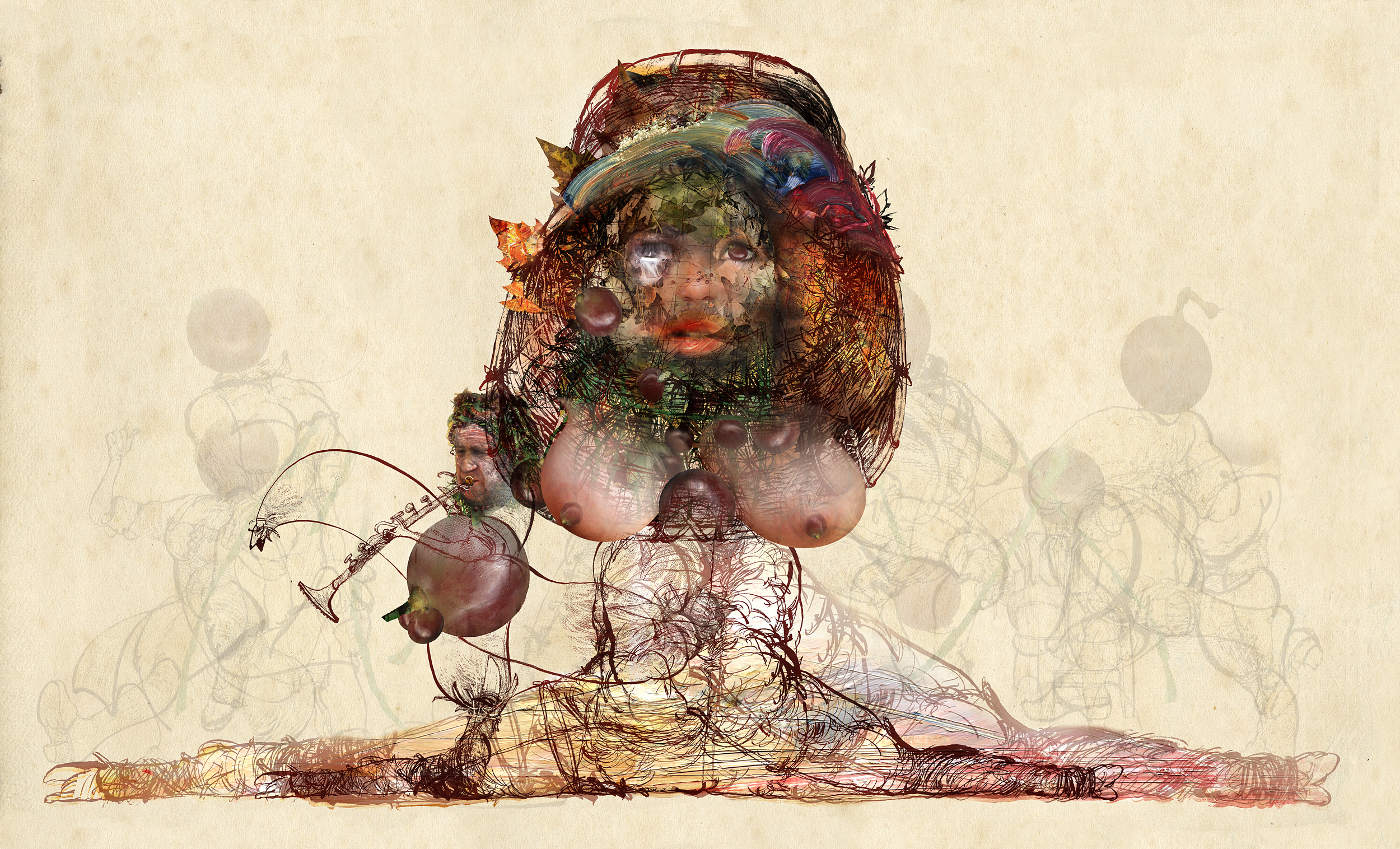
The miraculous wine of the mass
Everything was originated from an order made by the Franciscan Fathers of the Guipuzcoan town of Zarauz, in Spain, a convent consisting of three naves, erected by Antonio Blockland and / or by Ruiz de Larrinaga, in 1577. They command an Italian painter nicknamed “Il Vitti” the accomplishment of three nudes of equal form, and a fourth of somewhat greater size. The first three will symbolize summer, autumn, and winter, and the fourth, most important, spring. The first three paintings will be housed in each of the naves, and the fourth will have an itinerant movement among the others, as a symbol of the renewal of life. The paintings provided by Il Vitti are of such realism and voluptuousness, that the monks hurry to cover them with separate screens of interwoven wicker, which is drawn back at will. Analogous episode, although more venal, than that of the dispute between Cardinal Carafa and Michelangelo when he painted The Last Judgment in the vault of the Sistine Chapel (the painter was accused of immorality for having captured all the nude figures, and only afterwards of his death —not the same Pope would have dared to face the anger of genius—, the artist Daniele da Volterra was commanded to paint a cloth that covered the genitals of the images, which earned him the nickname "Il Braghettone"
Later, the convent of Zarauz is taken by French soldiers during the War of the Pyrenees, who looted the place and the paintings. Other wars followed to this one until finally the Peace of Basilea is signed, in 1795.
It will be over 190 years without any change in the place. The history of the paintings, however, has been caught in popular tradition. Finally, it was decided to commission, in 1986, a replica of those paintings. It summons to the quoted artist Carlo Mastroleone, painter that adheres to the “caravagismo”, school that proposes to take reality as a model, the beings of the streets, in reaction to the mannerism.
In the first meeting, Mastroleone warns: "Replicas, I do not make". He is clarified that it could not be replicas because they lack an original. The discussion turns then on the theme of the screens: "I do not paint to spare, but to reveal", insists the artist. They reply that this is the case, but because of the religious nature of the place, the nudes should be as less nudes as possible. Logically, the conclave derives in an imaginary erotic disectomy that takes days. The negotiations continue until an agreement is reached. The high cost of the budget allows to make a single painting, provocatively hidden by vines, willows and wood, elements used for the wine of the mass, which will attract decidedly to the parishioners.
A group of seven young virgins are chosen according to the purity of the wine of the mass, large quantities of vines are partitioned with wicker panels, and the work is started. The young girls begin their slow and systematic circular walk naked on the grapes, following the traditional way of macerating the wine. Its festive and youthful characters do not take long to make all that flow into an unbridled intake of wine, alcoholic drinks and a guerrilla of grape juice, bunches of leaves and grapes. The contract specifies that the painter must sketch the first forms with spots of local wine, for which he takes decided participation in the game in what a posteriori will describe as an alienating dance. After sixteen days and their respective nights, the place is reopened, the girls leave it, and in the afternoon, the priests enter to supervise the task.
The large-sized painting (see) portrays Gertrudis (Trudy), an 18-year-old pulpy Dutch. The cleric continues his inspection and notes that Trudy has been deflowered by the painter, and states that from that moment the nymph stops belonging to God to belong to man. The painter affirms that this is not blood, but wine, but the scene is too contaminated so as to arrive at a scientific conclusion. It is advisable to compensate the painter with a smaller amount than agreed, who, indignant, depart from the town with his work in Trudy’s company. Months later, a council arrived from Bilbao confirms that because of the sacred work of the Mass, the other six young women have also been pregnant in full grace.

Under the doctrine of National Security
"Are they watching us from space?" is the most frequent question currently in developed countries. What is true in the existence of a satellite —the "Black Knight"— alien that watches over us? Astrophysicists rush to send signals to space while asking what is the reason why we have not returned to the Moon in 45 years. The answer is so simple that will surprise you:
"It's the Big Brother's eye, stupid."

Virtue and fortune (Machiavelli).
Machiavelli understands by virtue, the personal capacity to dominate the events and to realize, even resorting to any means, the desired end. He understands by fortune the course of events that do not depend on the human will. In any case, Machiavelli understands that what one achieves does not depend entirely on virtue or fortune, that is, not for personal merit, not for the favor of circumstances, but for both causes. Mandated to do the calculations in infinite, where parallels cross, that balance was impossible to achieve. That is why post-modernity assign greater specific weight to Murphy's Law.

In the tent of Arihento.
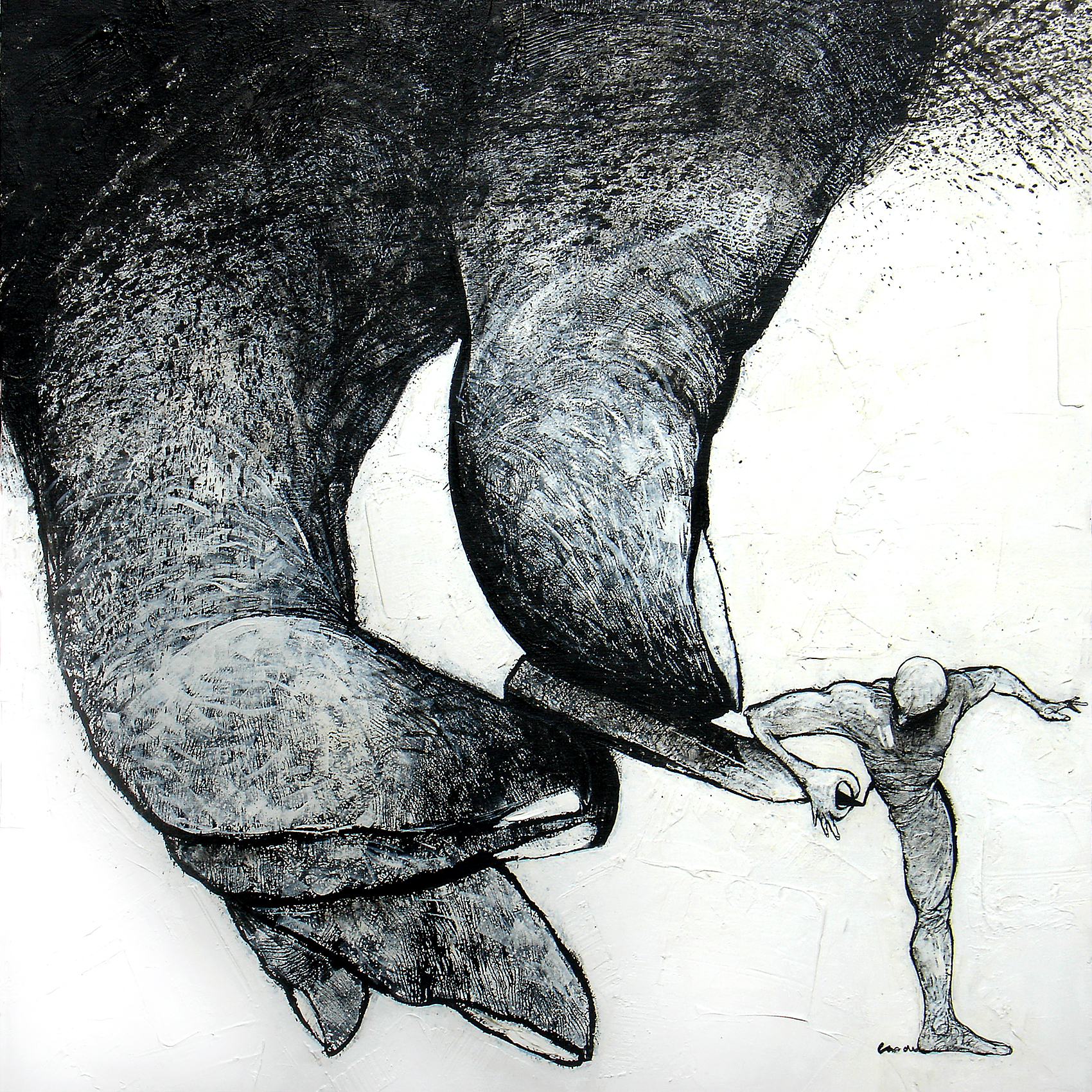
Creating each other.
It is said that God created man in his image and likeness so that his existence would reveal God.

The Solerne librarian.
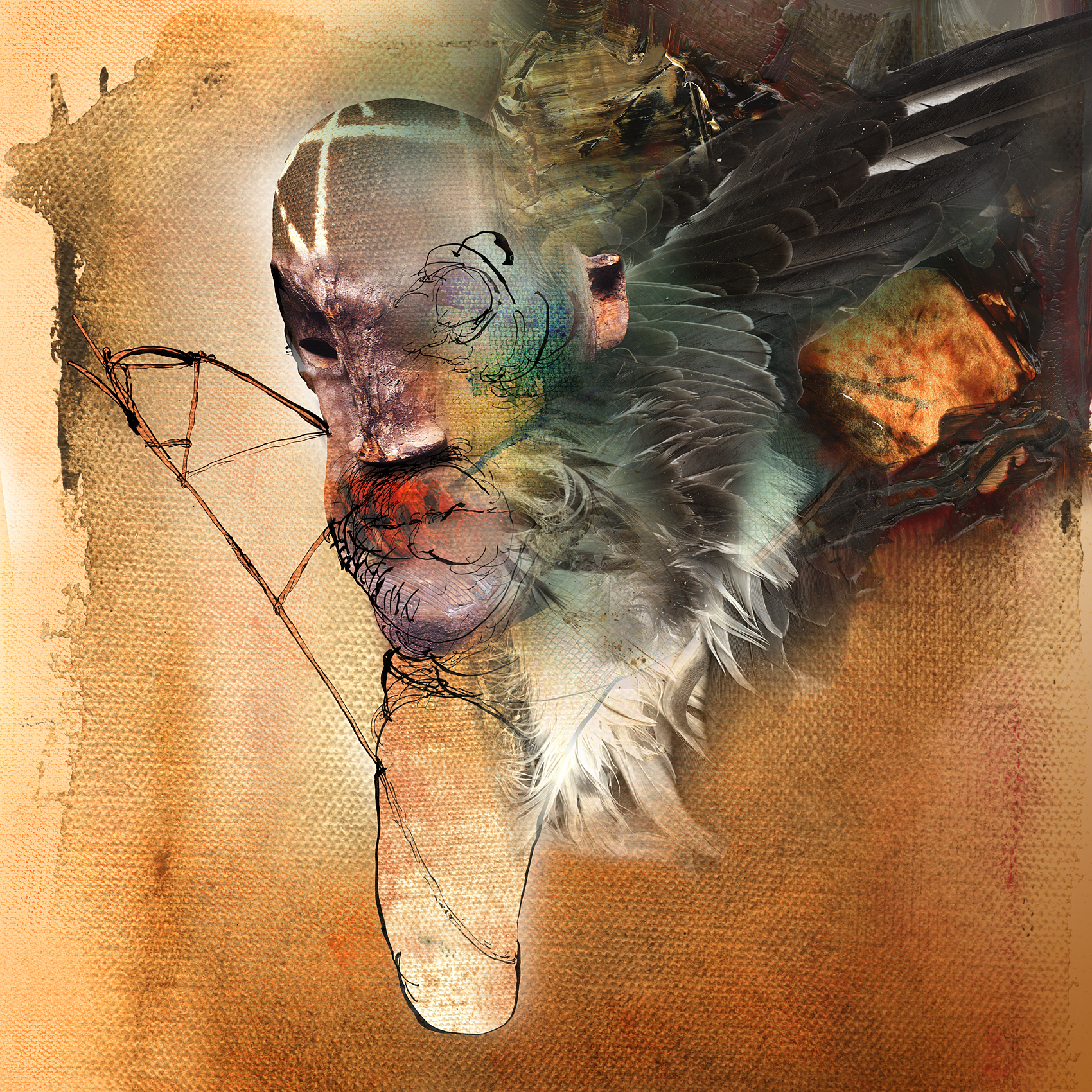
Suspicion.

Portrait of Sashiko Sachet
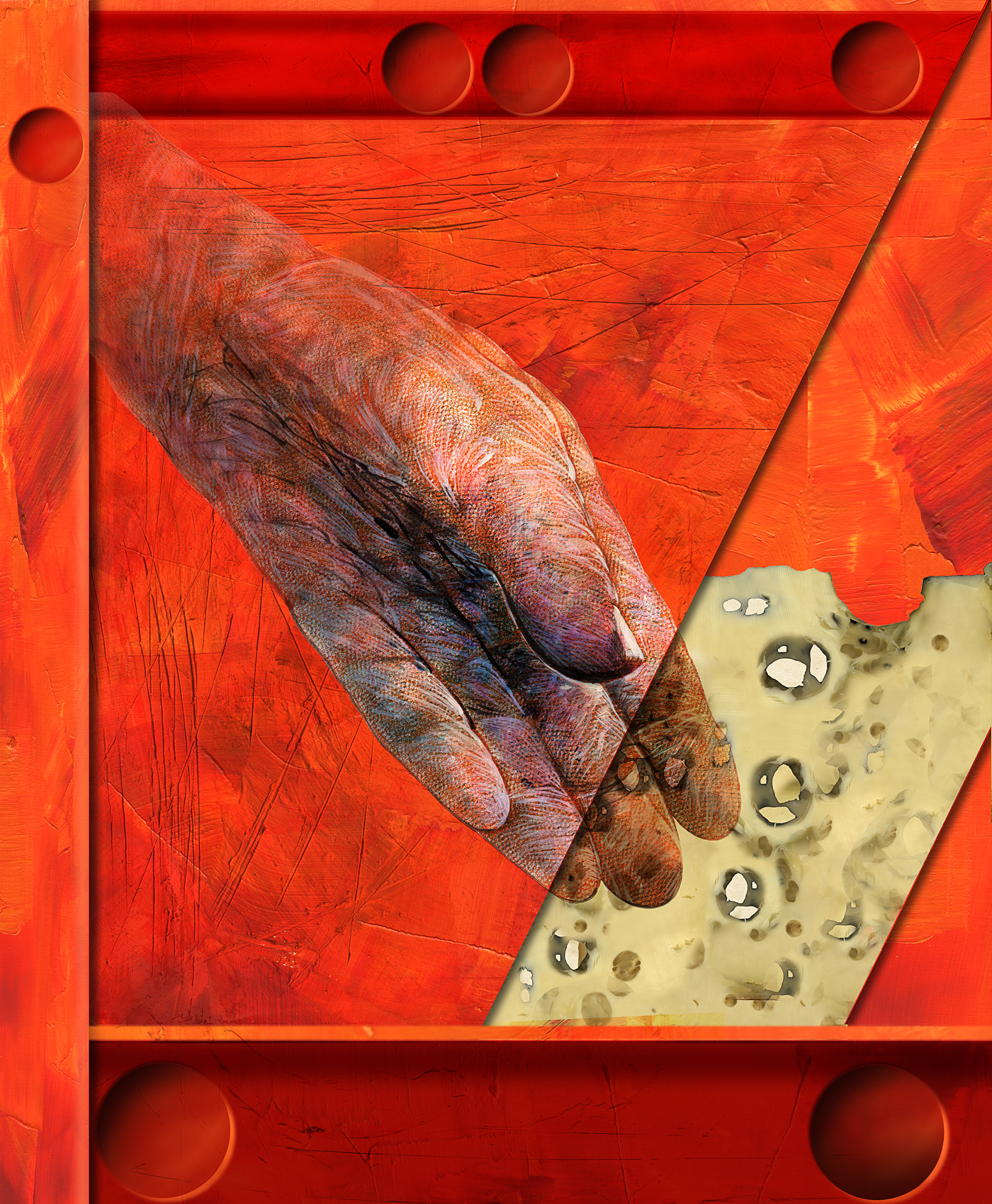
Corruption arrives to Mondrian's neoplasticism
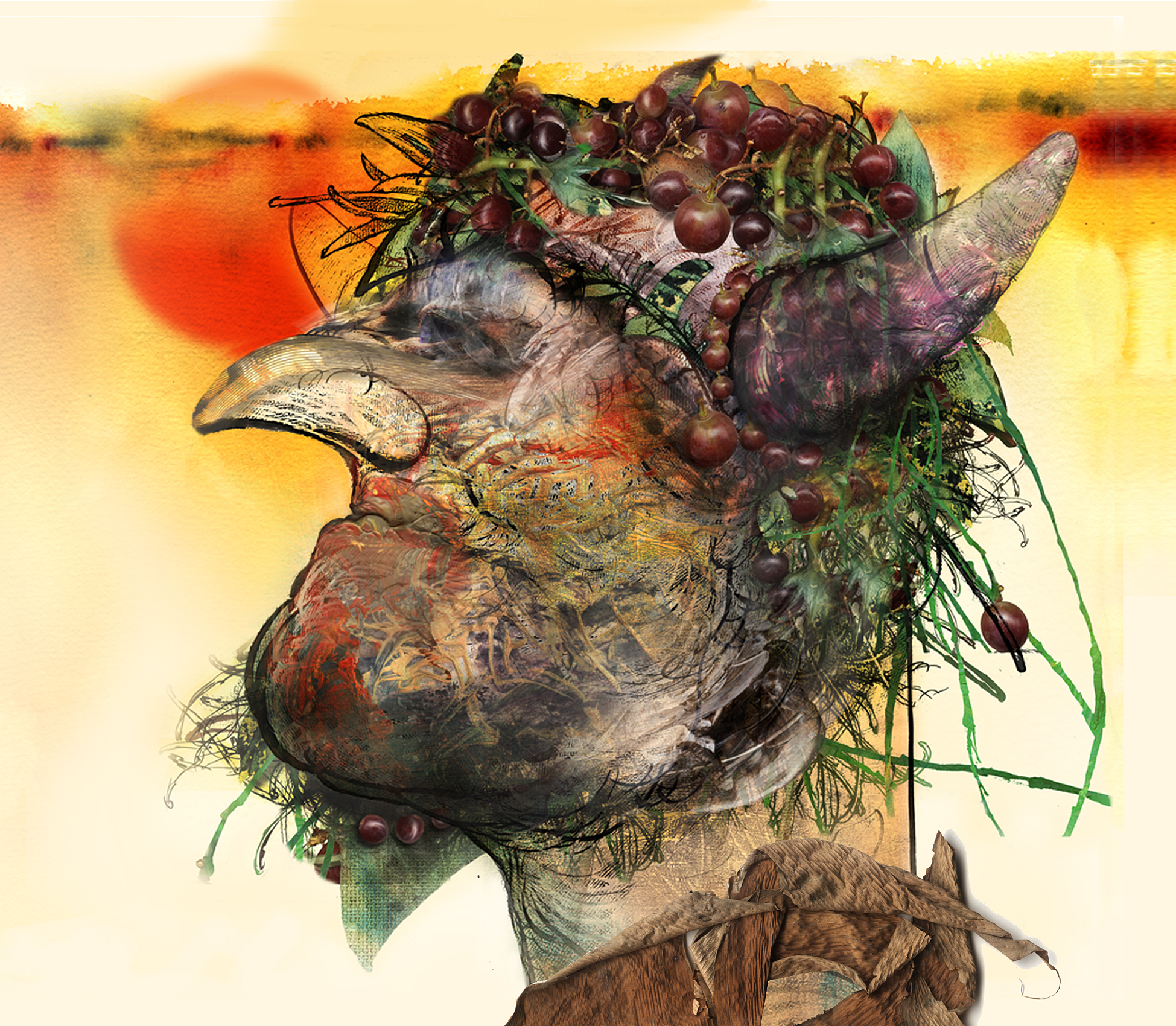
Ego in marbleland
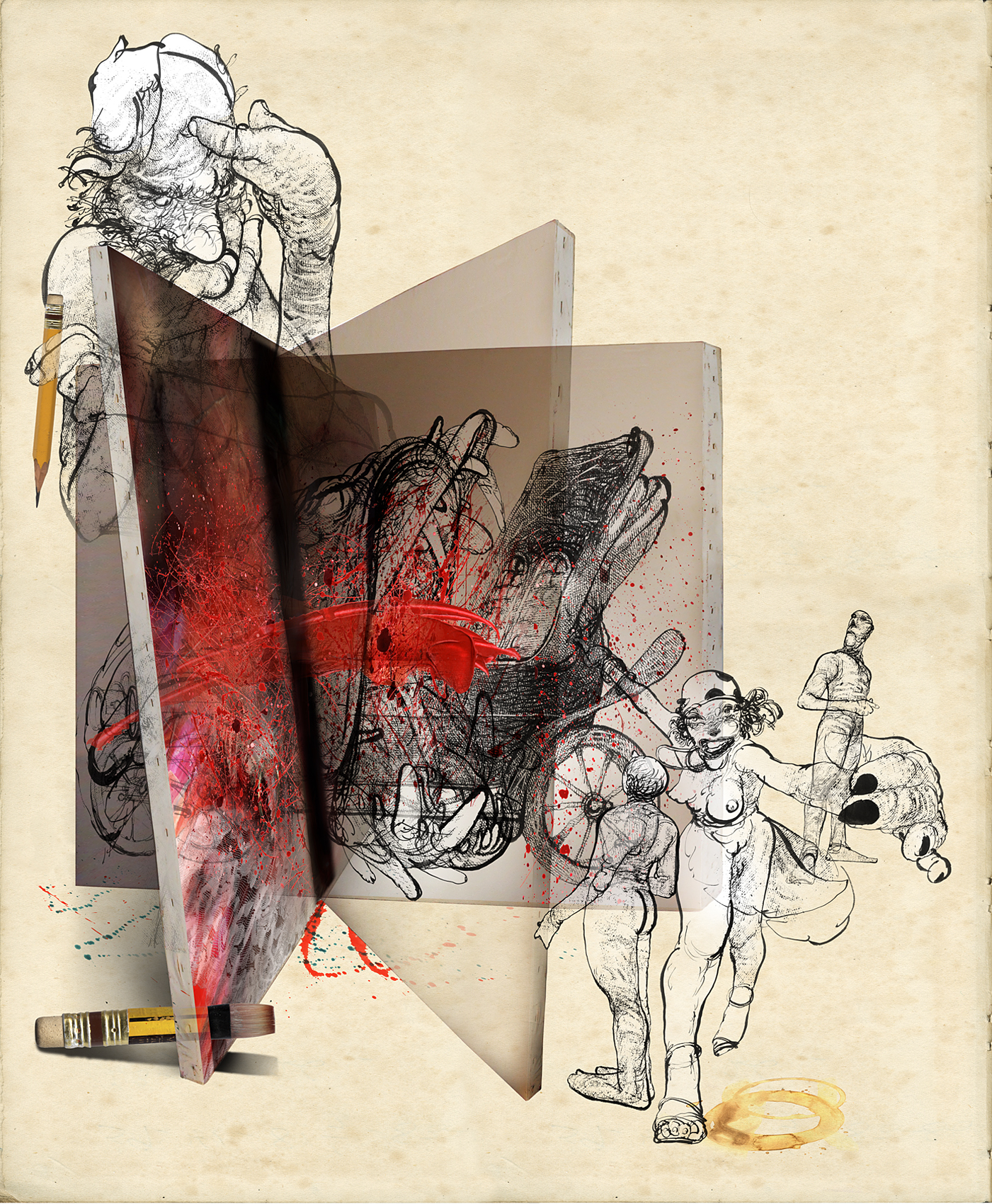
Fatal intersection in the studio
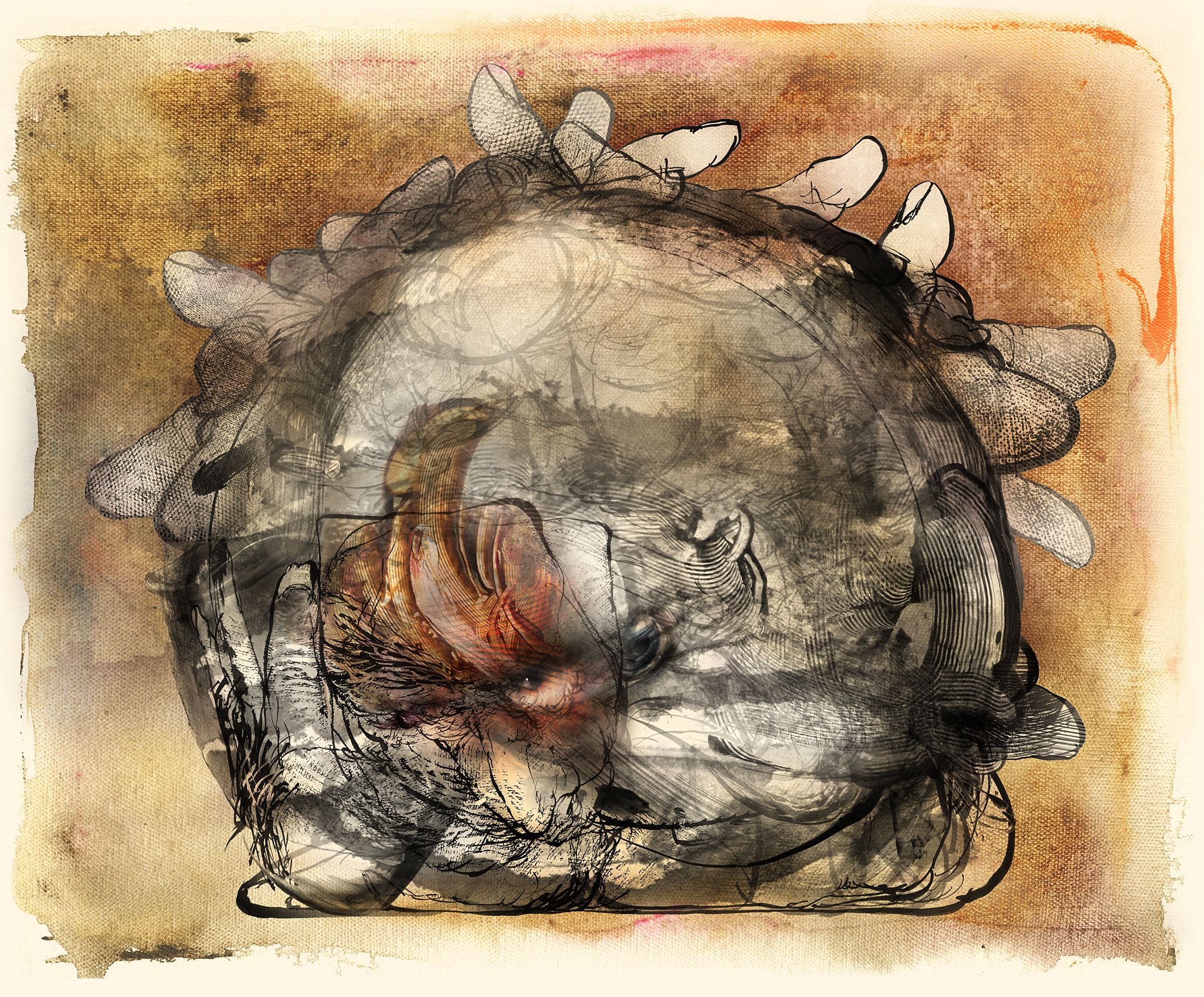
Guilt

2.001 Jasper John's version of the American flag
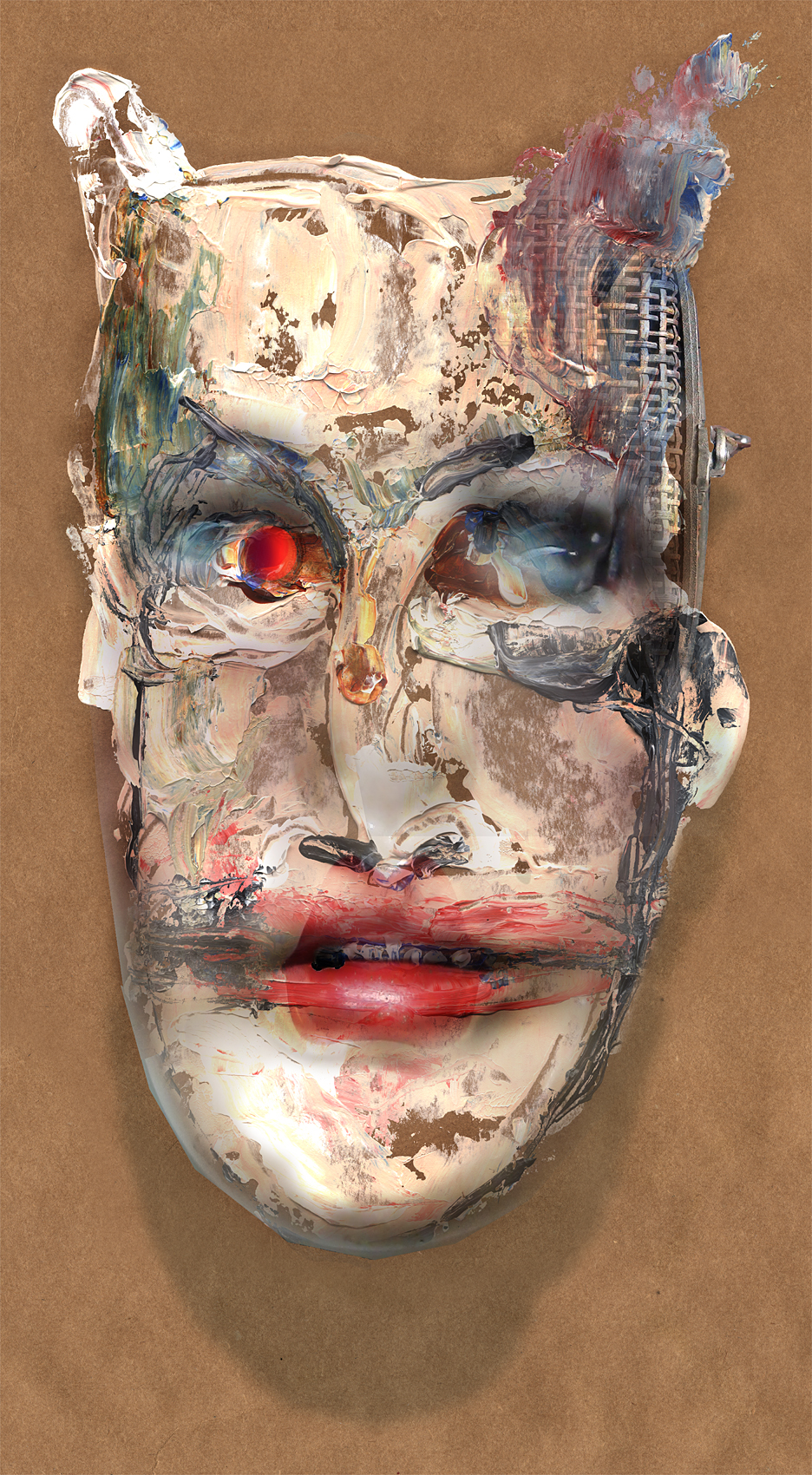
Mask to evoke Amanda
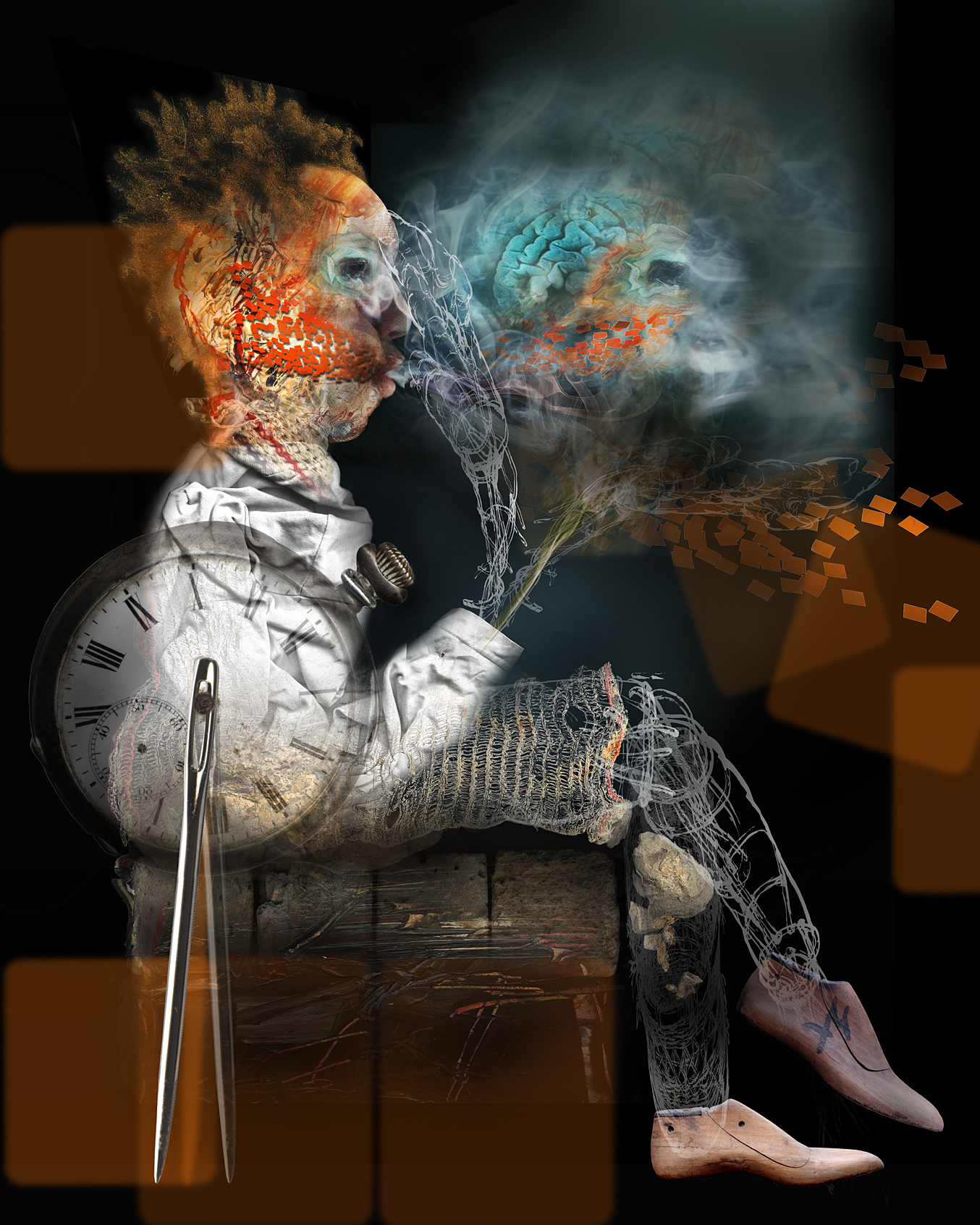
Releasing Moorings
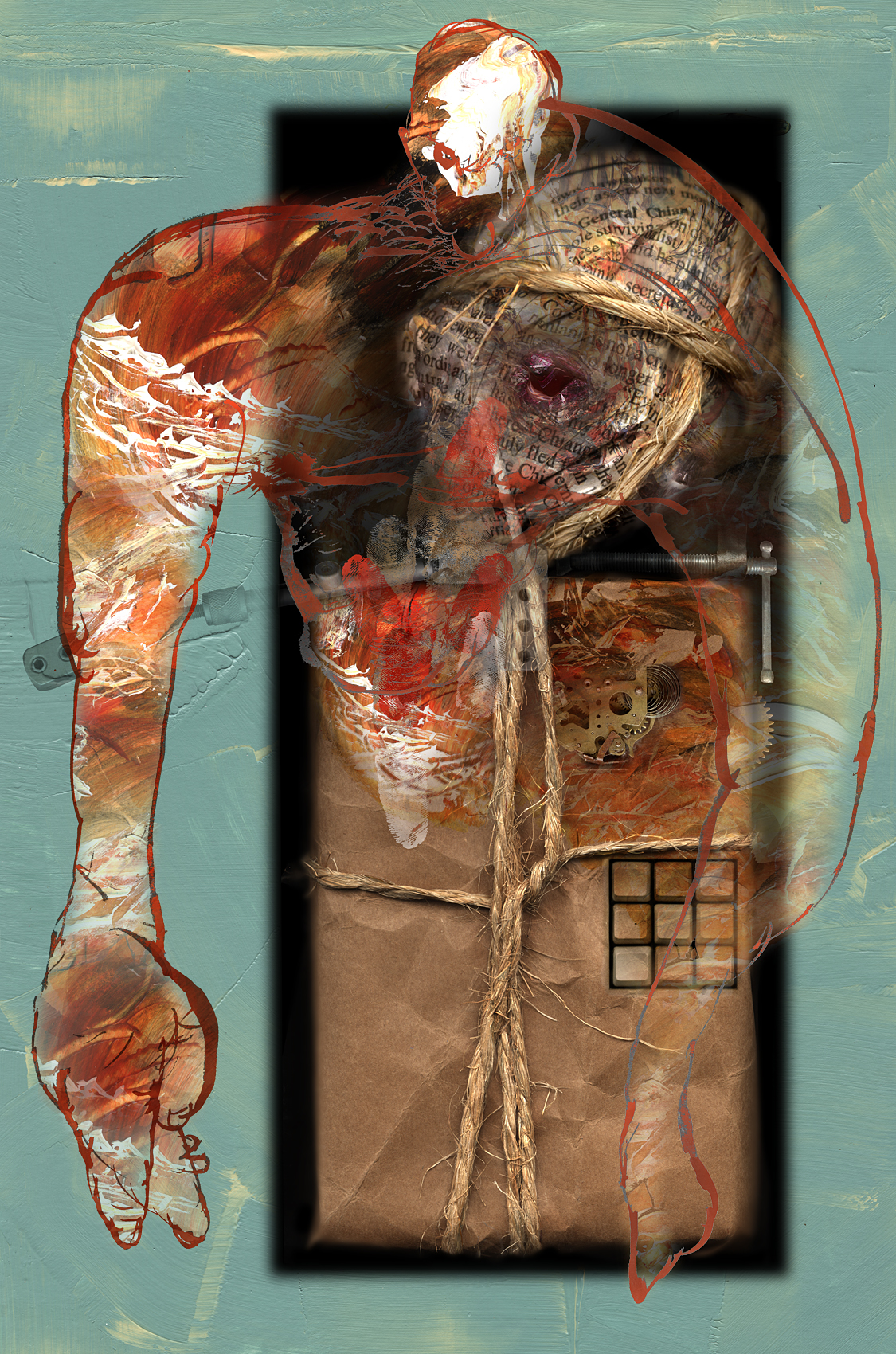
The displaced man
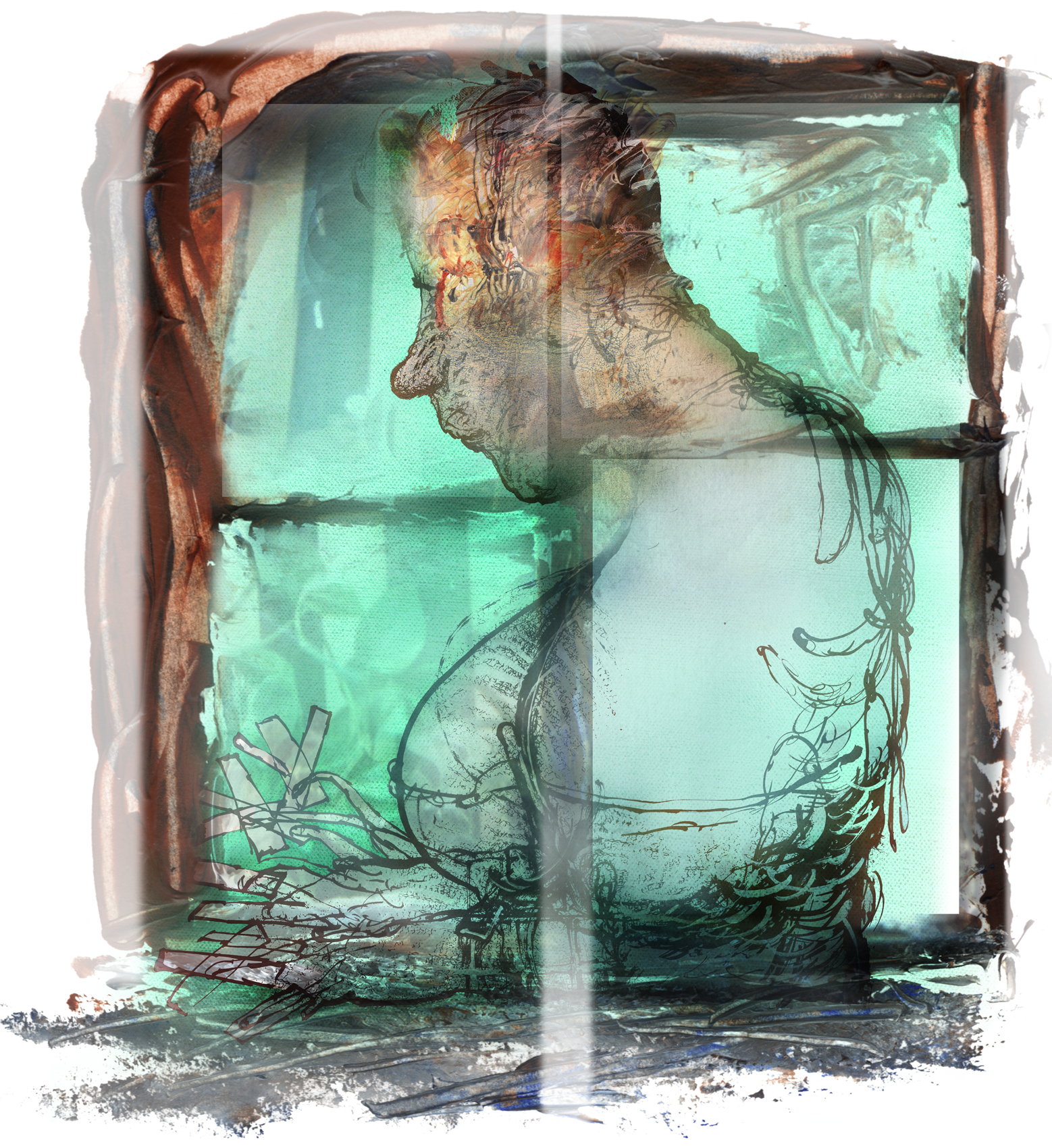
Through the window of the piano teacher
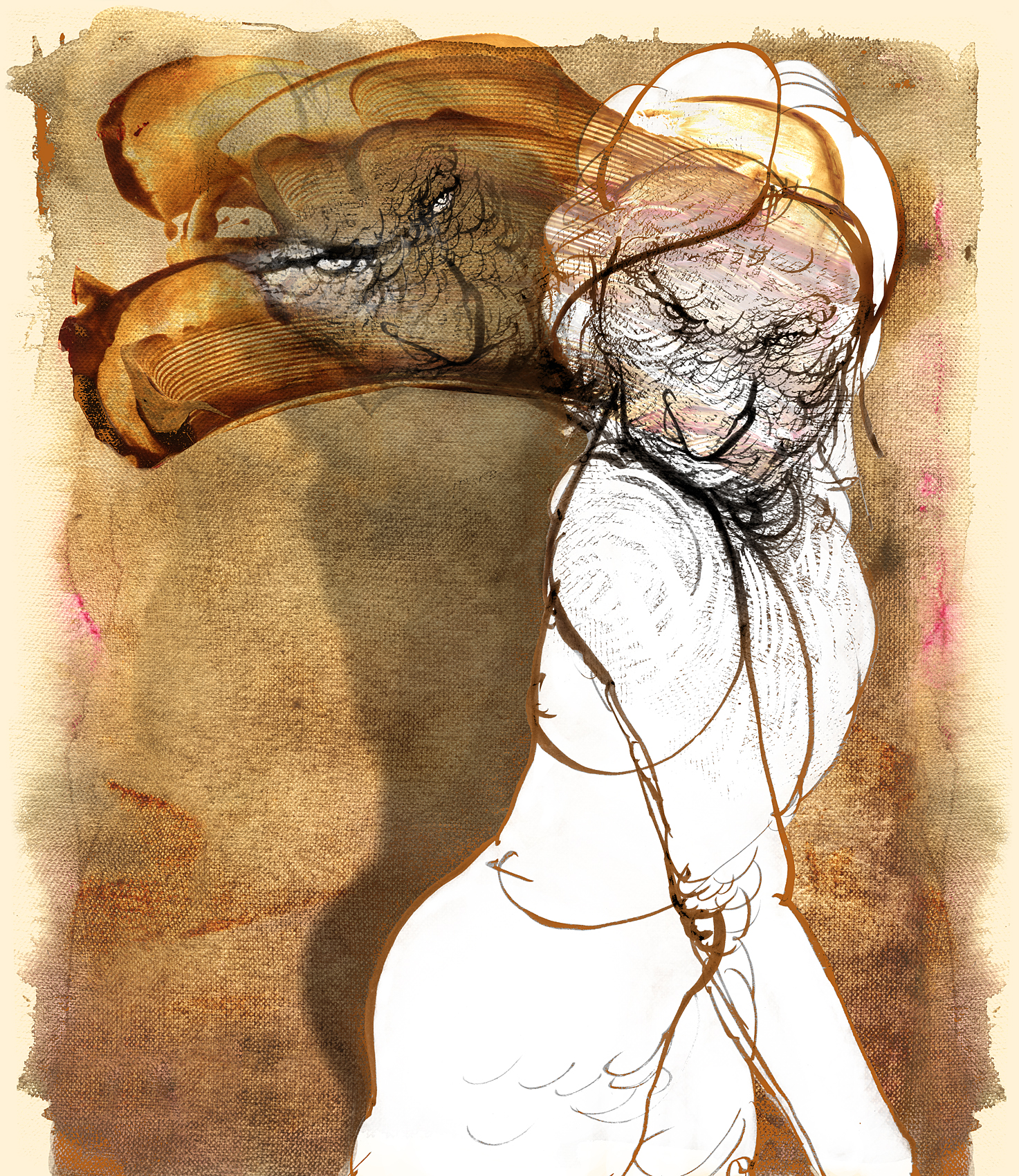
Passerby carrying her conscience
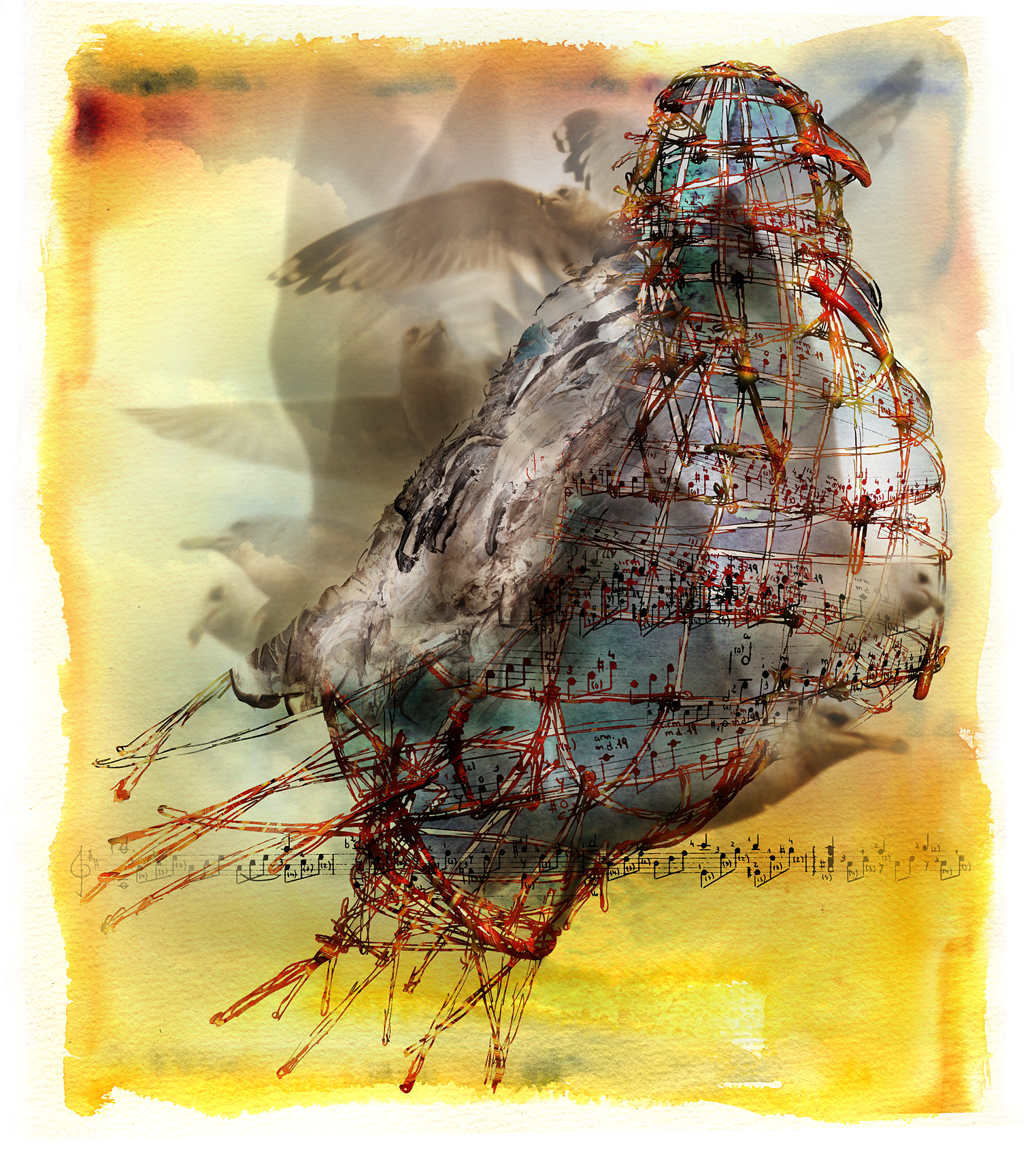
Where the song nestles
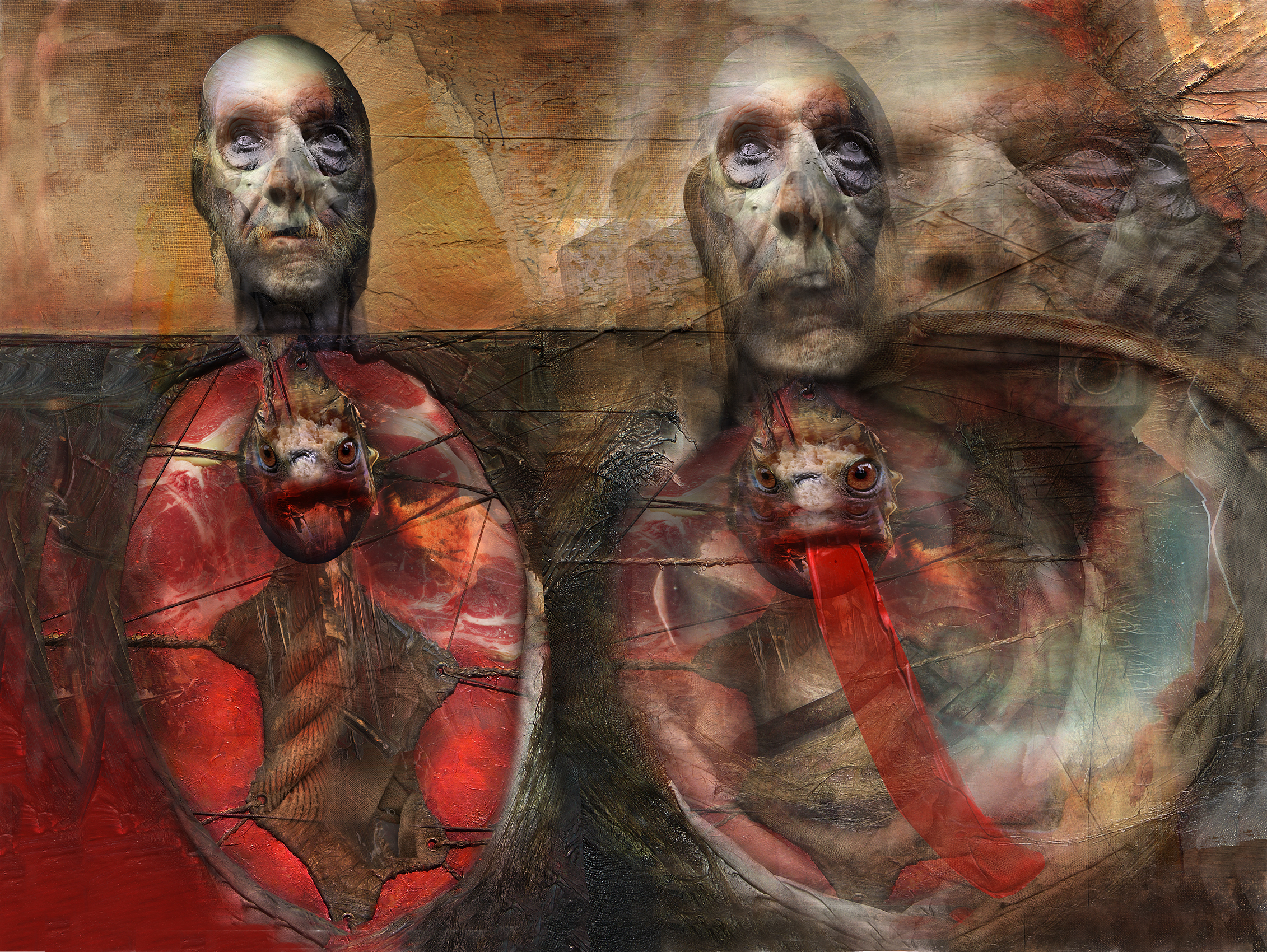
Egonias














































